Late Heavy Bombardment
description: hypothesized event, occurring ca. 4.1–3.8 billion years ago, during which a large number of asteroids collided with the Moon, Mercury, Venus, Earth, and Mars
20 results
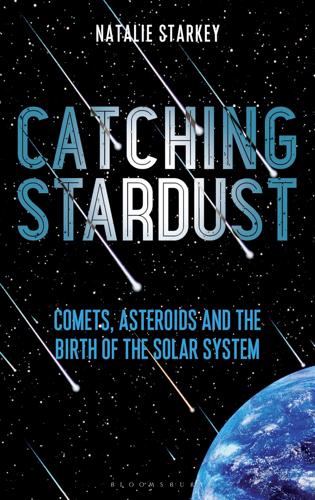
Catching Stardust: Comets, Asteroids and the Birth of the Solar System
by
Natalie Starkey
Published 8 Mar 2018
However, chemical studies on some of the large basins on the Moon indicate that the craters were made by asteroids, too. This is where the Nice Model can help again as, although it predicts that the initial phase of the Late Heavy Bombardment was probably dominated by cometary impacts, it indicates that the final objects to be flung around the Solar System were probably the asteroids. Overall, the model predicts that the mass of asteroids and comets hurtling into the inner Solar System may have been roughly equal over the course of the Late Heavy Bombardment, which may have lasted anywhere between 10 and 150 million years. However, it is a number that is hard to determine as the original mass of the asteroid belt is currently unknown.
…
here, here Commercial Space Launch Competitiveness Act 2015 (US) here cosmic dust here collecting space dust on Earth here comets and asteroids in the laboratory here international collaboration on IDP analysis here isotope analysis of IDPs here organic matter in comet dust here oxygen isotope composition here space dust on Earth here Curiosity here, here cyanobacteria here cyanogen here D-type asteroids here D/H (deuterium/hydrogen) ratio here heavy water problem here water in comets and asteroids here Darmstadt, Germany here Dawn here, here, here Deep Impact here, here, here Deep Space Industries (DSI) here Desert Fireball Network, Australia here differentiated objects here dinosaurs here, here, here, here, here DNA (deoxyribonucleic acid) here, here, here Double Asteroid Impact Redirection Test (DART) here dust in space see cosmic dust Earth here, here, here, here, here, here, here age of the Earth here Earth interior here Earth’s tectonic plates here Earth’s water here, here formation of the Moon here impact of an impact here life on Earth here, here, here, here, here magnetic field here plate tectonics here, here, here silicates here space dust on Earth here ecliptic here, here Edgeworth-Kuiper Belt see Kuiper Belt Enceladus here ER-2 here, here Eris here EROs (easily retrievable objects) here Europa Clipper here European Space Agency (ESA) here, here, here, here, here Horizons 2000 Science Programme here European Union here evolved objects here, here extinction here, here, here, here fireballs here, here, here Flammarion, Camille here G-type asteroids here galaxies here, here galaxy see Milky Way Galileo here gas control valves here Genesis here, here geology here, here, here, here Gerasimenko, Svetlana Ivanovna here Giotto here, here glycine here, here Göbekli Tepe, Turkey here gold here, here Goldin, Daniel S. here Google Lunar XPRIZE here Grand-Tack Model here, here gravitational collapse here Hale-Bopp here Halley’s Comet here, here, here, here Harold II of England here Hayabusa here, here, here, here, here, here, here, here heavy water here, here HED meteorites here heliocentric distances here, here, here, here heliosphere here helium here, here, here Herschel Space Observatory here Hills Cloud see Oort Cloud here Hubble telescope here humans here, here, here, here, here human role in space mining here hydrogen here, here, here, here, here water here hydrosphere here ICE here IDPs (interplanetary dust particles) here, here, here, here, here, here, here IDP collections here international collaboration on IDP analysis here isotope analysis of IDPs here organic matter here oxygen isotope composition here instrumentation here space instrumentation here intergalactic dust here International Asteroid Day here International Space Station (ISS) here, here interplanetary dust here interstellar dust here, here, here interstellar medium (ISM) here iron here, here, here, here, here, here, here JAXA here Johnson Space Center, Houston, Texas here, here, here Jupiter here, here, here, here, here, here, here, here, here, here, here asteroid belt here Jupiter-family comets here, here, here, here, here, here, here Kant, Immanuel here Kingston Lacy House, Dorset, UK here Kuiper Belt here, here, here, here, here, here, here, here, here Kuiper, Gerard here Lagrange point here, here Laplace, Pierre-Simon here Late-Heavy Bombardment (LHB) here, here, here, here, here, here life here, here, here development of life on Earth here, here lithophile elements here Luna missions here Lunar Cataclysm (see also: Late-Heavy Bombardment [LHB]) here Luxembourg here, here M-type asteroids here, here, here, here mammoth, woolly here Mars here, here, here, here, here, here, here, here, here, here, here, here, here, here, here meteorites here, here, here, here, here, here, here rovers here, here, here, here Martian, The here mass spectrometers here, here, here, here, here, here Ptolemy instrument here Mercury here, here, here, here, here Messenger here metals here, here, here, here, here, here, here, here, here mining asteroids for metal here, here, here, here, here, here, here, here, here Moon here precious metals here meteorites here, here ALHA84001 here altering meteorites in space here finders keepers here forming the Moon here meteor showers here, here meteor strike here Murchison here, here Tagish Lake here uniting astronomy and sample science here where meteorites come from here where to find a meteorite here methane here, here, here, here micrometeorites here microscopes here, here, here, here, here, here, here, here Milky Way here, here, here, here, here minerals here, here, here, here, here, here, here, here, here, here, here, here, here, here mining in space here, here capturing space objects here how to begin looking for resources in space?
…
The age and density of the large craters scarring the lunar surface is clear evidence for a step away from this quiescent time, an era that resulted in the Moon’s surface being pummelled by large, high-speed impacts of objects from space. This period in our Solar System’s history is called the Lunar Cataclysm or the Late Heavy Bombardment, and although it was recognised most easily on the Moon, because the craters are well-preserved there, it affected the entire inner Solar System. The fact that we don’t see evidence of a similar bombardment on Earth doesn’t mean our planet escaped violent collisions. It is certain that Earth was also pummelled by incoming space rocks around 4 billion years ago, but not much evidence for this bombardment exists on our planet at the present day.

Moon Rush: The New Space Race
by
Leonard David
Published 6 May 2019
The theory is that such basins formed because the intense heat caused by such impacts actually melted the rock that was struck, and no impact melts seemed evident before 3.9 billion years ago. The same thing would have happened on Earth, but our planet’s changing geology has covered those battle scars. Scientists call this period the late heavy bombardment, also known as the lunar cataclysm. But some scientists are critical, and this model is beginning to collapse after being the lead theory for decades. William Hartmann, senior scientist emeritus at the Planetary Science Institute in Tucson, Arizona, suggests that late heavy bombardment observations are best explained not by a lack of Moon impacts before four billion years ago. Rather, a very high impact rate before four billion years ago rapidly chewed up evidence on the lunar surface.
…
Comets, asteroids, moons, and planets were aimlessly slamming into one another for hundreds of millions of years. By studying the shapes, sizes, and ages of lunar craters, researchers gain a window into the early stages of solar system development. It’s a telling saga concerning the existence, or nonexistence, of the late heavy bombardment of the Moon around four billion years ago. At the same time, another benefit from crater analysis is spotting hazards and safe havens for future missions, monitoring the Moon for impacts and the risk they pose to future space exploration. Unlike Earth, the Moon has only a feeble atmosphere, so meteoroids have nothing to stop them from making it to the lunar surface.
…
That’s why data today suggest a spike at 3.9 billion years ago. Hartmann’s historical review project, ongoing at the International Space Science Institute in Bern, Switzerland, is not so much about adding new science as it is about determining how scientific ideas are started and why people believe them. In the case of the late heavy bombardment, he asserts each group thought the others had proven the concept, so that the edifice was constructed from data and models that were nonconclusive. Our understanding of the solar system is continually being refined. New models exemplify the importance of modeling as a technique to discover how our Moon came to be.
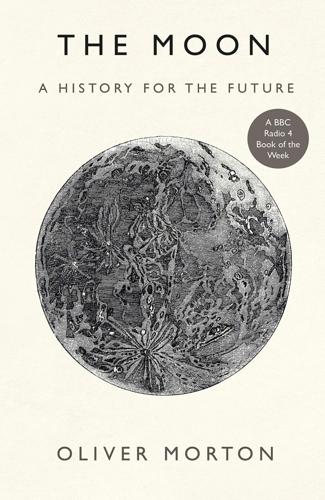
The Moon: A History for the Future
by
Oliver Morton
Published 1 May 2019
Unsurprisingly, the rocks associated with the impacts which had created the basins in which those basalts sat were older. What came as a shock was that those impact-basin ages seemed to be highly concentrated: the impacts that had formed the basins seemed to have happened rat-a-tat-tat almost half a billion years after the Earth and Moon had formed. This led to the notion of a “Late Heavy Bombardment”—that some 500m years after the formation of the solar system the rate of impacts, which was in long-term decline, suddenly peaked back up for some reason. As astrobiology got going in the 1990s, this phenomenon began to look like a very interesting connection between the history of life and the history of the solar system.
…
But it would still have been appreciable. If life originated on Earth, it could have spread to Mars through this sort of “transpermia”; if on Mars, it might quite likely have fallen to Earth.8 Even while becoming part of the increasingly cosmic context in which people thought about early life, though, the Late Heavy Bombardment was not universally accepted: Hartmann, among others, never liked it. He thought that to the extent the effect was real, the lack of evidence for basins more than 4bn years ago simply showed that such evidence got written over, not that such impacts never happened. There was not an uptick in impacts around 3.9bn years ago; it was just that later impacts had overwritten the evidence of the earlier ones.
…
Arguments that the bombardment might have been caused by Jupiter and Saturn swinging in towards the Sun and out again thanks to a peculiar orbital resonance, which seemed to provide a mechanism whereby the solar system would have been filled with asteroids and comets thrown out of earlier, stable orbits around the relevant time, look less convincing now than when they were first made a decade or so ago. As well as finding itself without an explanation, these days the rock record of the Late Heavy Bombardment looks a little more dubious, too. Recent studies suggest that the Apollo rocks seemed to offer evidence for impacts clustered around the same time simply because most, maybe all, of the rocks in question actually came from the same impact: Imbrium. Its debris is estimated to have covered about a fifth of the Moon’s nearside.
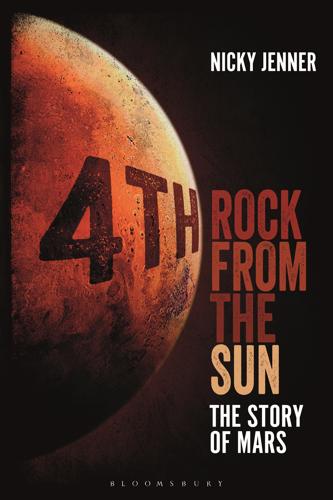
4th Rock From the Sun: The Story of Mars
by
Nicky Jenner
Published 5 Apr 2017
Unlike Earth, whose surface has been continually changed and resurfaced and evidence from past eras essentially smoothed over and hidden, large parts of Mars’s surface remain relatively ancient and preserved. Much of the surface is at least 3.5 billion years old! The Noachian period began some 4.5 billion years ago with the formation of Mars, and stretched through a period of time dubbed the Late Heavy Bombardment (anything that occurred before roughly 4.1 billion years ago is sometimes known as ‘pre-Noachian’). During this event, the rocky planets in the inner Solar System were peppered and bombarded with an unexpectedly high flux of rocky impactors. These may have been swept up and pushed inwards by the gas giants, resulting in a flood of rocky bullets headed towards Earth, Mars and neighbours.
…
Scientists have a few ideas. One possibility is that Mars was violently smashed into by a large impactor when it was just a few hundred million years old, heating its surface, disrupting its core dynamo and dismantling its magnetic field (also draining its atmosphere as a result). This is possible, as the Late Heavy Bombardment was in full force at that time in Mars’s life, and we have other signs that Mars may have suffered a colossal impact (the Borealis basin, its moons, the crustal dichotomy). Scientists have matched age estimates for magnetised crater basins on Mars to the time when we believe Mars’s magnetic field switched off for good, supporting this theory.
…
Experiments have shown that these little moss piglets can survive in outer space for at least 10 days and likely longer. Specifics aside, scientists deem it reasonable that simple life could survive an interplanetary trip. Thirdly, material is exchanged quite readily within the inner Solar System, extending back to the time of the Late Heavy Bombardment. During this time, both Mars and Earth were pummelled by impactors and numerous rocks from their surfaces were flung out into space. While many rocks simply fell back to re-impact their parent body, many set off into deeper space and found their way to a planetary neighbour, where they set up home.
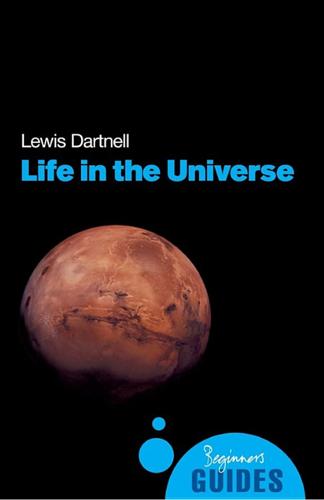
Life in the Universe: A Beginner's Guide
by
Lewis Dartnell
Published 1 Mar 2007
During the earliest stage of the solar system, a barrage of these bodies rained on the inner planets. It’s not quite clear whether this bombardment was a tailing-off after the violent formation of the planets or whether there was a sudden volley of incoming projectiles after a period of relative peace. If the latter, such a late heavy bombardment may have been caused by projectiles slung Earth’s way either by the late formation of the gas planets Neptune and Uranus, a slight shift in Jupiter’s orbit or by the passing of a nearby star through the stellar nursery that created the Sun. This sharp blitz is believed to have run from 4.2 billion years ago with, increasingly infrequent, large impacts continuing until perhaps 3.8 billion years ago.
…
Without these deliveries of volatile substances from beyond the snow line, no organic molecules or oceans would have ever existed on Earth’s barren surface. Life may even have gained a foothold relatively quickly after the formation of the Earth and Moon, only to be snuffed out by the barrage of a late heavy bombardment. Although the vast majority of impacts were small, every now and then the Earth stumbled into a giant lump of rock. Objects hundreds of kilometres across occasionally fell from the sky and dumped a colossal amount of energy on to the Earth’s surface. Such a large asteroid would punch through the solid crust and into the fluid mantle beneath, throwing up a great splash of molten rock that would rain back to Earth, covering the surface with hundreds of metres of solidifying débris.
…
Eventually, this excess heat radiates away and the atmosphere steadily cools, until droplets of liquid water form. It begins to rain on Earth again, a continual deluge that lasts thousands of years, as the oceans refill. The emergence of life Such devastation may have befallen the Earth five or six times during the late heavy bombardment. After each mega-impact the oceans refilled, organic substances delivered from outer space accumulated and, perhaps, replicating molecules emerged and cells took a tentative foothold. But with the next cataclysmic spasm life was mercilessly snuffed out once more. This knocking-back, or impact frustration, limits the earliest time life could possibly have arisen – and persisted – on Earth.
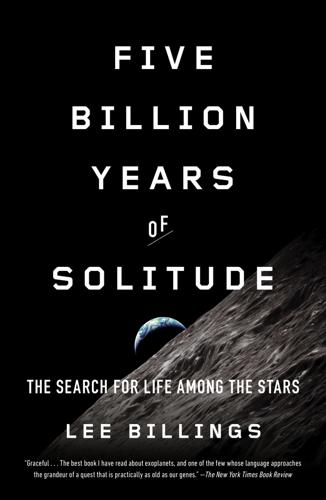
Five Billion Years of Solitude: The Search for Life Among the Stars
by
Lee Billings
Published 2 Oct 2013
Finally, sometime between 3.8 and 4 billion years ago, a complex, chaotic, hazily understood series of gravitational interactions between the giant planets stirred up most of the outer solar system, sending barrages of asteroids and comets hurtling sunward to pound the dry, rocky inner worlds. This event is called the “Late Heavy Bombardment,” and was the last gasp of planet formation. We observe its effects in the cratered surface of the Moon, and also in the rain that has eroded its geographic scars from our own planet—much of Earth’s water seems to have arrived during the Bombardment, express-delivered from the outer solar system.
…
The Earth must have been quite hot as it cooled from formation, yet a handful of very rare Hadean rocks contain trace evidence of liquid water, suggesting that even then our planet may have had scattered surface seas. The boundary between the Hadean and its successor, the Archean Eon, is not well defined, being set by the smeared-out occurrence of the Late Heavy Bombardment between 4.1 and 3.8 billion years ago, when our solar system’s giant planets seem to have hurled huge volumes of asteroids and comets down into the inner solar system. The great impacts that ended the Hadean and commenced the Archean Eon also began our planet’s record of sedimentary rock.
…
acid runoff, 173, 175 Alienopoly, 260 Allegheny Plateau, 124–28 Allen, Paul, 12 Allen Telescope Array (ATA), 12–14, 41, 42 Alpha Centauri, 36, 52, 73, 232, 234 search for planet near, 94–98 simulations of planetary assembly in, 96, 97 American Astronomical Society, 194 Americas, 21–22 anaerobes, 129, 140, 142, 143, 169 Anaximander, 78 Anderson, Eric, 258 Andromeda Galaxy, 31, 191, 238 Anglada-Escudé, Guillem, 64–69 anthracite coal, 125, 131, 134, 136, 137, 144, 160, 184 Anthropocene era, 135–37, 145, 146 anti-gravity devices, 100 Apollo program, 1, 50, 151, 187, 202, 212, 239 Archean Eon, 139–40, 141, 169, 171, 184, 200 Arecibo Observatory, 39–42 Ares V, 203 Aristarchus, 79–81, 86 Aristotle, 78–79, 82 Arthur, Janice, 121–23 Arthur, Mike, 121–24, 127–30, 136–38 Asimov, Isaac, 152 asteroids, 3, 19, 76, 110, 140, 154, 258 Earth struck by, 30 astrobiology, 15, 153, 169, 231 astronomy, 4, 33, 48, 111, 190 Copernican Principle (principle of mediocrity) in, 83, 89, 91 golden age of, 192 modern, beginning of, 82 see also cosmology Astrophysical Journal Letters, 67 Atchley, Dana, 15 Atlantis, 185–87 ATLAST (Advanced Technology Large-Aperture Space Telescope), 198, 203, 230 atomic weapons, 23–24 atoms, 43, 79–81, 248 Automated Planet Finder (APF), 61, 70, 114 Bahcall, John, 249, 251 Bains, William, 261 Barnard’s Star, 52 Baum, Frank, 11 Beichman, Charles, 221–22 Berner, Robert, 178 Big Bang, 89–91 biosignatures, 167–72, 261–62 black holes, 88–89, 191, 206 black shales, 123–26, 135, 137–38, 141 in Marcellus formation, 126–30, 137, 138, 141, 144, 160 Bode, Johann, 109 Bode’s law, 109–10 BoingBoing.net, 74 Bonfils, Xavier, 66–69 Bradbury, Ray, 98–99 Bryson, Bill, 144 Bush, George W., 196, 198, 215, 221–23 Butler, Paul, 55, 58–70, 96, 114 Caldeira, Ken, 181 California, 105–7, 112–13 gold rush in, 105–6, 111, 112–13 Calvin, Melvin, 15, 19–20, 25 Cambrian Period, 138–39, 143–45, 182 Cameron, James, 258 Campbell, Joseph, 261 Canada, 244–48 Canadian Shield, 246 Capella, 239 carbon, 123, 131, 132, 134, 135, 140, 141, 175, 179, 182 carbonate-silicate cycle, 175–81, 184 carbon cycle, organic, 175 carbon dioxide (CO2), 124, 132, 134–37, 140, 141, 157, 159–62, 168, 170, 172, 173, 175–82, 184 Carboniferous Period, 131, 132 Carina Nebula, 238 Carnegie Institution, 251 Carpenter, Scott, 100 Carter, Jimmy, 240 Cash, Webster, 219–20 Cerro Tololo Inter-American Observatory, 96 Challenger, 3, 188–89 Chandra X-Ray Observatory, 192, 209 Chaotian Eon, 139 Charbonneau, David, 228–30, 232 charged-coupled devices (CCDs), 51–53 China, 21–22 chlorofluorocarbons, 134, 142 chlorophyll, 141, 143 Christmas Tree Cluster, 238 Clinton, Bill, 196, 215 clouds, 161–62, 164, 206 coal, 125, 131, 134, 136, 137, 144, 160, 184 Columbia, 189, 196 comets, 2, 3, 19, 76–77, 140 Halley’s, 3 Compton Gamma Ray Observatory, 192, 209 computers, 43–44 Constellation program, 196, 198, 203, 204, 215, 221, 223 convergent evolution, 21 Cook, James, 85–86 Copernican Principle (principle of mediocrity), 83, 89, 91 Copernicus, Nicolaus, 81–83, 86, 87, 89, 91, 200 Cornell University, 39, 42 coronagraphic TPF, 217–22, 224, 231, 249 coronagraphs, 217 cosmology, 77–82 Copernican Principle (principle of mediocrity) in, 83, 89, 91 inflationary theory in, 89–92 modern, 86–87, 91 see also astronomy Cosmos, 240 Costanza, Robert, 74–75 Crab Nebula, 30 Crabtree, William, 84 Crutzen, Paul, 134–35 Cuban missile crisis, 23–24 cyanobacteria, 140–44, 175, 183 Daily Mail, 74 dark energy, 88, 90 dark matter, 206 Darwin, Charles, 200 Davidson, George, 113 deep time, 145–46 Democritus, 79, 80, 92, 238 Demory, Brice, 259 De Rerum Natura (On the Nature of Things) (Lucretius), 80–81 De Revolutionibus Orbium Coelestium (On the Revolutions of Heavenly Orbs) (Copernicus), 82 Devonian Period, 128, 130–32 Diamandis, Peter, 258 dinosaurs, 30, 136, 144 Discovery, 189 DNA, 40, 141, 143, 170 dolphins, 16, 20–21 Drake, Frank, 9–17, 27–45, 101, 167–68, 240 Arecibo transmission of, 39–41 orchids of, 37–38 Drake equation, 16–25, 28–29, 38–39, 41, 42, 183 longevity of technological civilizations (L term) in, 22–25, 38–39, 41, 42 Draper Laboratory, 256 Dyson, Freeman, 104 Dyson spheres, 104, 105 Earth, 109 asteroid strike on, 30 atmosphere of, 3, 132, 134–35, 139, 140, 144, 157–60, 168–69, 174–77, 206, 238 “Blue Marble” images of, 212, 239–41 carbonate-silicate cycle on, 175–81, 184 climate of, 123–24, 128, 132–37, 142, 144, 156–57, 160–62, 173–75, 184 in early cosmology, 77–82 energy consumption on, 103–4 extinctions on, 43, 135, 184 faint young Sun problem and, 173–75 formation of, 2, 7, 20, 139, 173 geologic time periods of, 128–45 glaciation on, 132–34, 142, 174, 176, 178, 179, 183 human population of, 43, 100, 134, 136 ice caps of, 128, 132–33, 135, 136, 184 Laughlin’s idea for moving orbit of, 76–77 Laughlin’s valuation of, 73–76 oxygen on, 139–44, 159, 171, 180–82, 200, 238 Snowball Earth events, 142, 174, 179 Sun’s distance from, 83, 86 tectonic plates of, 30, 105, 111, 128, 140, 144, 176, 229 union of organisms with geophysical systems on (Gaia hypothesis), 175, 176, 178, 183 water on, 3, 30, 158–61, 174, 177–80, 182 Earth, life on, 31, 154 diversification and explosion of, 138–39, 143, 144, 182 emergence of, 4, 7, 19–20, 238 end of, 7–8, 31–32, 75–77, 159, 180–83 essential facts of, 29–30 humanity’s ascent, 144–46 intelligent, 20–21, 182–83 jump from single-celled to multicellular, 28 redox reactions and, 168 Earth-like planets, 29, 32–34, 71–72, 99, 227–28 Earth-size or Earth-mass planets, 6, 53–54, 56, 200, 227, 251 ecology and economics, 74 economic growth, 102, 103 Eddington, Arthur, 35 Edison, Thomas, 106 Einstein, Albert, 35, 87 Elachi, Charles, 211–12, 214, 221 electricity, 103, 136 Emerson, Ralph Waldo, 254 Endeavour, 190 endosymbiosis, 143 energy, 103–4, 136–38 from fossil fuels, 103, 124–27, 137, 154, 160, 184 Engelder, Terry, 126 Epicurus, 80 Epsilon Eridani, 10–11 Eshleman, Von, 35 ethanol, 137 eukaryotes, 143, 144 European Southern Observatory (ESO), 60, 64, 66 European Space Agency, 222 evolution, 183 convergent, 21 of universe, 88–89 exoplanetology, 13, 14, 34, 51, 193 exoplanets, 5, 27–28, 87, 222–23, 263 51 Pegasi b, 50, 53, 54, 58–59 Alpha Centauri Bb, 98–99 biosignatures and, 167–72, 261–62 Blue Marble images of, 212–15 distinguishing between various compositions of, 251 Earth-like, 29, 32–34, 71–72, 99, 227–28 Earth-size or Earth-mass, 6, 53–54, 56, 200, 227, 251 formation of, 109 GJ 667Cc, 65–69, 72 Gliese 581c, 163 Gliese 581d, 163 Gliese 581g (Zarmina’s World), 63–64, 68, 69, 72, 163 Gliese 876b, 60 habitability of, 154–83 HD 85512b, 163–64 Jupiter-like, 13, 28, 50, 56, 59, 60, 108, 109, 226, 228, 248–49 Laughlin’s valuation of, 71–77 migration theory and, 108 Neptune-like, 56, 108–9, 251 “Next 40 Years” conference on, 225–35, 263 observation of stars of, 33 snow line idea and, 110 super-Earths, 228–29, 251, 262 transits of, 53 TrES-4, 228 exoplanet searches, 5–7, 13–14, 32–33, 69–70 and false-alarm discoveries, 52–53 press releases on progress in, 163–65 SETI and, see SETI spectroscopy in, see spectroscopy, spectrometers see also telescopes Ferguson, Chris, 185–86 financial markets, 111–12 Fischer, Debra, 59, 61, 62, 69, 96 Ford, Eric, 249–50 Ford, Henry, 125 fossil fuels, 103, 124–27, 137, 154, 160, 184 fracking (hydraulic fracturing), 126–27 Gaia hypothesis, 175, 176, 178, 183 galactic planetary census, 54 galaxies, 87, 88, 99, 238 Andromeda, 31, 191, 238 Hubble Telescope and, 191 Local Group of, 88 Milky Way, see Milky Way Galileo, 241–42 Galileo Galilei, 81–83, 210 Galliher, Scot, 257 Garrels, Robert, 178 gas, natural, 125–27, 137, 184 Gemini telescopes, 199–200, 203 General Dynamics Astronautics time capsule, 100–103 geologic time periods, 128–45 geology, 110–11, 123 glaciers, 132–34, 142, 174, 176, 178, 179, 183 Glenn, John, 100 Goldin, Dan, 194, 211, 215, 242 governments, Urey on, 102 gravitational lenses, 35–37 Great Observatories, 192, 197, 209 Greece, ancient, 77, 92, 238 Green Bank conference, 15–25, 27–28, 101, 167–68, 240 greenhouse gases, 124, 134, 137, 157, 160, 174, 175 carbon dioxide, see carbon dioxide methane, 140, 142, 168–71, 174, 200 Grunsfeld, John, 197–99, 225–26, 235 Guedes, Javiera, 96 Gund Institute for Ecological Economics, 74–75 “Habitable Zones around Main Sequence Stars” (Kasting), 155–56, 159 Hadean Eon, 139–40, 156 Halley, Edmond, 84 Halley’s comet, 3 Hart, Michael, 174, 178 Hays, Paul, 176–79 heliocentrism, 79–82 Hiroshima, 23 Holmes, Dyer Brainerd, 100–101 Holocene Epoch, 133–35, 145 Horrocks, Jeremiah, 84 Howard, Andrew, 62 How to Find a Habitable Planet (Kasting), 167 Hu, Renyu, 259 Huang, Su-Shu, 15, 19 Hubble, Edwin, 86–87 Hubble Space Telescope, 189–93, 195, 197–99, 205–7, 209, 218–19, 226 human genome project, 234 hydraulic fracturing (fracking), 126–27 hydrogen, 159, 170–72 Icarus, 155 ice ages, 132, 133, 142–43 Industrial Revolution, 22, 134 inflationary theory, 89–92 Ingersoll, Andrew, 159 intelligence, 20–21, 23, 32, 182–83 interferometry, 213–14, 216, 231 International Space Station (ISS), 187, 189, 197, 202, 207–8, 210 interstellar travel, 44–45, 100–101 iron, 141 James Webb Space Telescope (JWST), 193–99, 202–4, 209, 215, 216, 218, 220, 225, 262 Jensen-Clem, Becky, 259 Jet Propulsion Laboratory (JPL), 211–12, 216, 219, 221–25, 231 Johnson, Lyndon B., 101 Journal of Geophysical Research, 178 Jupiter, 76, 109, 191, 239 Galileo’s study of, 81 Kepler’s laws and, 83 moons of, 28, 110 Jupiter-like planets, 13, 28, 50, 56, 59, 60, 108, 109, 226, 228, 248–49 Kasdin, Jeremy, 219–20 Kasting, Jerry, 150–52 Kasting, Jim, 150–67, 169–84 children of, 153 Kasting, Sandy, 150 Kasting, Sharon, 153 Keck Observatory, 59, 60, 62, 66, 118 Kennedy, John F., 224 Kennedy Space Center, 185 Kepler, Johannes, 82, 83 planetary motion laws of, 82–84 Kepler field stars, 41 Kepler Space Telescope, 13–14, 53–54, 56, 62, 71–73, 98, 108–9, 166, 201, 225, 229–30, 263 Kirschvink, Joseph, 142 Knapp, Mary, 259 Korolev, Sergei, 186 Kuchner, Marc, 217–18 Kuiper Belt, 76 Large Magellanic Cloud, 238 Lasaga, Antonio, 178 Late Heavy Bombardment, 3, 140 Laughlin, Greg, 5–6, 48–50, 53–57, 69–70, 93–100, 107–12, 114–15, 117–20 Alpha Centauri planet search and, 94–98 idea to move Earth, 76–77 magnetic toy of, 93–94 SETI as viewed by, 99 valuation equation of, 71–77 laws of nature, 155–56 Lederberg, Joshua, 15, 16, 167–68 Le Gentil, Guillaume, 85, 117 Leinbach, Mike, 185–86 Lick, James, 112–14 Lick Observatory, 58, 61, 62, 70, 113–19 life, 32 on Earth, see Earth, life on intelligent, 23, 32 single-celled, 20 technological, see technological civilizations light: photons of, 72, 89, 115–16, 156, 191, 193–94, 201, 202, 213, 216, 237–38 polarization of, 115–16 waves of, 213–14, 216 Lilly, John, 15–16, 20–21 Local Group, 88 Lovelock, James, 168, 170, 174–76, 178, 181–83 Lucretius, 80–81 Lyot, Bernard, 217 Madwoman of Chaillot, The, 36 Manhattan Project, 23 Marcellus Center for Outreach and Research, 127, 149 Marcellus formation, 126–30, 137, 138, 141, 144, 160 Marconi, Guglielmo, 48 Marconi Conference Center, 48–50, 53–57 Marcy, Geoff, 57–63, 69, 70, 114, 194, 230–32, 235 Margulis, Lynn, 175 Mars, 19, 50, 87, 100, 107, 109, 155, 167, 179, 191, 192, 239 Kepler’s study of, 82, 83 missions to, 187, 188, 196, 207, 221 water on, 28, 179 Marshall, James, 105–6, 112 Martian Chronicles, The (Bradbury), 98–99 Massachusetts Institute of Technology (MIT), 251–52, 259 ExoplanetSat project, 256–57 “Next 40 Years of Exoplanets” conference at, 225–35, 263 Mayor, Michel, 58 McPhee, John, 145 mEarth Project, 228–29 mediocrity, principle of (Copernican Principle), 83, 89, 91 Mercury, 82, 109, 239 meteorites, 20 methane, 140, 142, 168–71, 174, 200 methanogens, 140, 142, 169 microbes, 28 Miletus, 77 Milky Way, 16–17, 25, 31, 39, 41, 79, 86–87, 191, 237, 238 Sun’s orbit in, 95 Miller, George P., 101 Miller, Stanley, 19 Miller Institute for Basic Research in Science, 48, 74 mitochondria, 143 Moon, 3, 76, 100, 229, 242 in early cosmology, 78, 83 formation of, 30, 139 Moon, missions to, 188, 196, 221, 224 Apollo, 1, 50, 151, 187, 202, 212, 239 Morrison, Philip, 15, 18–19, 21, 23–24 Mosely, T.
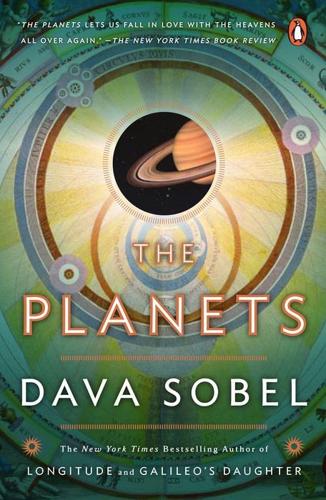
The Planets
by
Dava Sobel
Published 1 Jan 2005
The impact and upheaval blasted molten debris into near-Earth space, there to orbit as a disk before cooling and coalescing into the Moon. The violence of the Solar System’s formative period ended shortly thereafter, about four billion years ago, in a final paroxysm descriptively termed “the late heavy bombardment.” In those ancient days, many still-wandering planetesimals crashed into existing planets, which incorporated them at once. Multitudes of other small bodies were forcibly ejected, by gravitational interactions with the giant planets, to a distant land of Nod in the outer Solar System. The young Sun shone but faintly on the planets, growing gradually hotter and more luminous over its first two billion years, as it stored up helium in its core.
…
More craters abound there, overlapping in profusion, and one sees hardly any of the smooth dark expanses of pooled lava that characterize the near side. The thicker crust on the Moon’s back apparently checked the expulsion of lava from within. All geologic ferment on the Moon ceased about three billennia ago, after the late heavy bombardment cleared the Solar System of most menacing massive projectiles. Today, a ton-mass meteorite strikes the Moon no more than once in three years, on average. The occasional Moonquake can be confidently dismissed as a weak reaction to tidal stress, not the stirrings of a living planet with a liquid core.
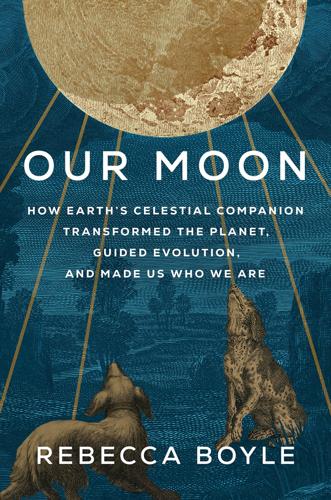
Our Moon: How Earth's Celestial Companion Transformed the Planet, Guided Evolution, and Made Us Who We Are
by
Rebecca Boyle
Published 16 Jan 2024
Based largely on these rock signatures, scientists came to believe that 500 million years after the synestia formed Earth and the Moon, the Moon was blasted within an inch of its life by a hard rain of asteroids the size of cities. They would have liquefied the Moon—and, because it was right next door, Earth as well. In 1973, planetary scientist Fouad Tera and his colleagues termed this epochal bombardment a “terminal lunar cataclysm,” which also became known as the Late Heavy Bombardment. “It must in any event have been quite a show from the Earth,” they wrote, “assuming you had a really good bunker to watch from.”9 The story of the bombardment made a lot of sense. Thanks to Wegener, scientists knew the Moon was often pelted with asteroids. They also knew that some of the molecular signatures in the Apollo rocks can only be made in the most horrifying conditions imaginable, as if the Moon’s entire mantle had been liquefied and rolled inside out.
…
Whatever troctolite 76535’s provenance, there’s a distinct possibility that many of the Apollo samples were liberated from the Moon’s innards after one or two huge, singularly destructive impacts. The Moon may not have suffered an unusually late asteroid blitz at all. And that would mean Earth didn’t, either. Today, the story of the Late Heavy Bombardment is in question, with many planetary scientists wondering whether it ever happened. If it didn’t, if early Earth was warm and calm and Edenic, then there’s no reason for life to have waited a billion years to take hold. Maybe life showed up right away, and simply stayed boring for longer than we thought before evolving into ferns and dinosaurs and us.
…
Scientists have found dozens of Moon rocks that returned home to Earth as meteorites, which landed in Antarctica, in the Sahara, and in other austere locations. It would not be terribly surprising to find similar Earth meteorites scattered on the Moon. Even if Big Bertha is not from Earth and is instead a chunk of the Moon, it still tells us something interesting, much like the now-controversial Late Heavy Bombardment. The Moon rocks are not monolithic. They have plenty of new secrets to tell. BIG BERTHA MAY or may not be from our planet, but scientists agree that the Moon is host to another Earthly souvenir: oxygen. This element of breath pools on the Moon for the same reason that we have full Moons, new Moons, and eclipses: because Earth, the Moon, and the Sun occasionally line up.

2312
by
Kim Stanley Robinson
Published 22 May 2012
Only at that point did the two smaller gas giants end up in the orbits they now occupy. Inside Jupiter’s orbit, meanwhile, that same Jupiter-Saturn resonance wave caught asteroids and threw them like pinballs all over the system, in the period called the Late Heavy Bombardment, 3.9 billion years ago. All the inner planets and moons were pummeled with impacts, to the point where the surfaces of these planets often were seas of molten rock. The Era of Big Hits! The Late Heavy Bombardment! Never let it be said that the great merry-go-round is entirely fixed and regular in its motion—that it doesn’t sometimes resemble more a swirl of bumper cars. Gravity, mysterious gravity, immutably following its own laws, interacts with matter, and somehow the result is complex motion.
…
Gravity, mysterious gravity, immutably following its own laws, interacts with matter, and somehow the result is complex motion. Invisible waves slinging rocks this way and that. What if human history has such invisible waves? Because ultimately the same forces apply. What big hits made us what we are? Will some new resonance create a wave and throw us in a new direction? Are we entering our own Late Heavy Bombardment? KIRAN AND SWAN From the moment Kiran saw the woman his cousins had grabbed, everything changed. She was old, tall, good-looking. She moved as if she were swimming. He knew immediately that she was a spacer, and that kidnapping her was a terrible idea. After that everything went a bit too fast for him actually to be deciding what to do.
…
She came back to something they didn’t seem to want to address: “I suppose you have to stick with the sunshield, now that it’s there?” One waved a hand impatiently. “Some say no, that we should change.” “What do you mean? Wouldn’t that take spinning the planet up to some kind of day-night?” “Yes.” “But how?” “The only way there is,” one said. “A heavy meteor shower at a tangent.” “The very late heavy bombardment,” someone called from the jokesters’ table. “But wouldn’t that wreck the surface you have?” Swan said. “Blast away the foamed rock, the CO2, the atmosphere—everything you’ve done?” “Not everything,” the first one said. “We’d just keep hitting the same spot. Things would just be… disarranged.”
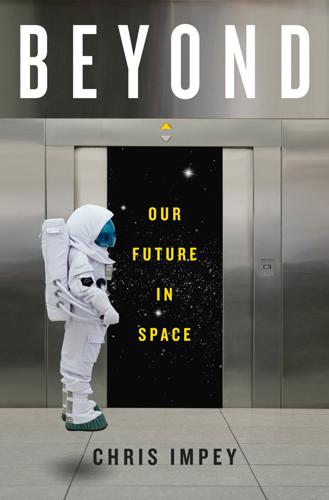
Beyond: Our Future in Space
by
Chris Impey
Published 12 Apr 2015
This evolution occurs on geological timescales of hundreds of millions or billions of years. Here’s how the Earth has changed. It formed 4.5 billion years ago and minerals show that there was liquid water within 100 million years, so conceivably life started then. If it did, it must have survived the “Late Heavy Bombardment” 3.9 billion years ago, when unstable orbits in the Solar System led to a surge of meteor impacts. Life around that time was limited to prokaryotes, or cells without nuclei, and there was no oxygen in the atmosphere. Around three billion years ago, bacteria evolved that produced oxygen as a waste product, which is poisonous to other kinds of bacteria.
…
Frank, 188 behavioral b’s, 15 Bell X-1, 71 Bell, Alexander Graham, 78 Bell Labs, 153 Benford, Gregory, 223–24 Benford, James, 223–24 Bennett, Charles, 230 Bering Strait, land bridge across, 8, 120, 218 Berlin Rocket Society, 32 Berlin Wall, 41 Berners-Lee, Tim, 78–79 Bernoulli, Daniel, 68 Berserker series (Saberhagen), 177, 259 Bezos, Jeff, 103 Bible, 148–49 big bang theory, 131, 255 “Big Ear” telescope, 237 Bigelow, Robert, 102–3 binary stars, 126 biohackers (grinders), 207 biomarkers, 216–18 Biosphere 2 experiment, 192–97, 193, 285–86 black projects, 69–70, 72, 144 Blade Runner, 204, 208, 259 Blue Origin, 103 Boeing X-37, 72, 85 Bohr, Niels, 213, 288 Bostrom, Nick, 207, 245–47, 260–61 Bounty, HMS, 202 Bradbury, Ray, 164 brains: computer interfaces with, 205–7 human, 12–17, 203, 283 of orcas, 190 radiation damage to, 115 simulation of, 259–61 “brain in a vat” concept, 260 Branson, Holly and Sam, 89 Branson, Richard Charles Nicholas, 80, 86–89, 95, 97–98, 101–2, 106 Breakthrough Propulsion Physics, 290 Brezhnev, Leonid, 42 Brightman, Sarah, 102 Brin, Sergey, 275 British Airways, 87 British Interplanetary Society, 221 Brokaw, Tom, 74 Brother Assassin (Saberhagen), 177 Bryan, Richard, 238 buckyballs, 151, 231 Buddhism, 20, 267 Bulletin of the Atomic Scientists, 197 Buran, 72 Burnett, Mark, 75 Burroughs, Edgar Rice, 164 Burrows, William, 35–36 Bush, George W., administration of, 93 Bussard, Robert, 222 butterfly effect, 195 By Rocket into Interplanetary Space (Oberth), 31 California, population dispersion into, 8 California, University of: at Irvine, 112, 223 at Los Angeles, 78 Calvin, William, 15 camera technology, 53, 176–77, 205 Cameron, James, 92, 120, 176 Canada, 142 canals, on Mars, 163 canards, 82–83 cancer, 180 cannonball, Newton’s experiment with, 25, 267 cannons: acceleration force of, 26 smooth-bore, 24 carbon, 172 in nanotechnology, 151–52, 182 as requirement for life, 123–24, 256 carbon dioxide, 132, 171, 172–73, 182, 193–94, 196, 218, 278 carbon nanotubes, 151–52 carbyne, 152 Cassini spacecraft, 52–53, 125, 182 Castro, Fidel, 41 casualties, early Chinese, 22 cataracts, 115 cats, 48–49, 251 causality principle, 230–31 cave paintings, 15 celestial property rights, 145–47 Center for Strategic and International Studies (CSIS), 158 centrifuges, 114 Cerf, Vinton, 67 Chaffee, Roger, 43 Challenger, explosion of, 55–56, 56, 74, 107, 271 Chang’e 3 lunar probe, 143, 162 chemical fuels, 219–21, 220 chickens, research using, 26 chimpanzees, 14 genetic diversity of humans vs., 202 China: as averse to innovation, 109 in early attempts at space travel, 21–22, 22, 68, 139, 141 population dispersion into, 7 revolution in, 141 rocket development in, 23–24, 113 space program of, 139–44, 140, 161, 162, 195, 276 US relations with, 144 Christian, Fletcher, 202 Christianity, 20 Chuansheng Chen, 11 civilization: Type I, 253, 254, 257 Type II, 253–54, 254, 257 Type III, 253, 254, 257 Type IV, 253, 254, 255 Clarke, Arthur C., 149–50, 164, 185, 201, 252 climate change, 197–98, 286 Clinton, Bill, 154 cloning, 251 Clynes, Manfred, 205 Cocconi, Giuseppe, 187 Colbert, Stephen, 74, 117 Cold War, 35–39, 41–43, 50, 55, 73, 76, 139, 145, 197 Columbia, disintegration of, 55, 56, 107 Columbia Accident Investigation Board Report, 107 Columbus, Christopher, 243 comets, 183 Commercial Orbital Transportation Services (COTS), 275 Committee on the Peaceful Uses of Outer Space, 145 communication: with alien species, 52, 189, 234–35, 238, 239, 246, 253, 255, 259 by digital data transmission, 66–67, 77–80 latency and, 178 space technology in, 153–54 Compaq, 95 computation, future technology of, 258–62 confinement, psychological impact of, 169–70 Congress, US: legislation in, 78, 144 on space programs, 38, 41, 75, 156, 158 consciousness, simulation of, 259–61 conservation biology, 201 conspiracy theories, 238, 240 Constellation program, 104 Contact (film), 236–37, 242 Contact (Sagan), 236 contraception, 200 Copernicus, 19, 20, 127 Coriolis force, Coriolis effect, 152 cosmic rays, 115, 160, 160, 164, 167, 168, 204 cosmism, 27 cosmonauts, 141 disasters of, 108 records set by, 115 selection criteria for, 74 Cosmos 1, 184 cosmos, cosmology, ancient concepts of, 17–20 Cosmos Studios, 184 Cosmotheoros (Huygens), 163 counterfactual thinking, 14 Cronkite, Walter, 74 cryogenic suspension, 250–51 cryptobiosis, 123 cryptography, 231, 291 Cuban missile crisis, 41–42 CubeSat, 184–85 Cultural Revolution, Chinese, 141–42 Curiosity rover, 165, 167, 176, 181 cybernetics, 206–7 Cyborg Foundation, 288 cyborgs (cybernetic organisms), 204–8, 288 Cygnus capsule, 100 cytosine, 6 dark energy, 256 d’Arlandes, Marquis, 68 DARPANET, 78 Darwin, Charles, 265 “Darwin” (machine), 227 Death Valley, 118–19 deceleration, 222, 223 DeepSea Challenger sub, 120 deep space, 126–29 Defense Advanced Research Projects Agency (DARPA), 78, 224 Defense Department, US, 38, 78, 90, 153 De Garis, Hugo, 258 Delta rockets, 72, 113 Delta-V, 111 Democritus, 19 Destination Mir (reality show), 75 Diamandis, Peter, 90–94, 97–98, 147, 156 diamonds, 131, 231 Dick, Philip K., 204–5 Digital Equipment Corporation, 213 DNA, 6–7, 9, 19, 189, 202, 228, 251, 263, 265, 266 Do Androids Dream of Electric Sheep (Dick), 205 dogs: brains of, 13 in scientific research, 251 in space travel, 40, 47 Dolly (sheep), 251 Doomsday Clock, 197–98, 246, 286 dopamine, 10, 98 Doppler method, exoplanet detection and characterization by, 127, 128, 129, 130, 133, 215 Doppler shift, 127 Dora-Mittelbau concentration camp, 33 Downey, Robert, Jr., 95 drag, in flight, 68, 83, 223 Drake, Frank, 187–88, 235, 237 Drake equation, 188, 189, 233–35, 237, 241, 243, 244, 253, 291–92 DRD4 alleles, 7R mutation in, 10–12, 11, 15, 98 Drexler, Eric, 226 drones, 180–81 Druyan, Ann, 184 Duke, Charles, 45 Dunn, Tony, 225 Dyson, Freeman, 226–27, 253 Dyson sphere, 253–54, 254 Earth: atmosphere of, 8, 70–71, 70 early impacts on, 50, 172 geological evolution of, 172 as one of many worlds, 17–20 planets similar to, 122, 124–26, 129–33, 224, 235 projected demise of, 197–98 as round, 19 as suited for human habitation, 118–22, 121, 234 as viewed from space, 45, 53, 121, 185, 270 Earth Return Vehicle, 169 “Earthrise” (Anders), 270 Earth similarity index, 215–16 eBay, 79, 95 Economist, The, 105 ecosystem, sealed and self-contained, 192–97, 193, 285 Eiffel Tower, 27, 149 Einstein, Albert, 220, 228, 256 Eisenhower, Dwight D., 36–39, 73, 79 electric cars, 96 electric solar sails, 186 electromagnetic waves, 186 e-mail, 78 embryo transport, 251 Enceladus, 177, 182, 227 potential habitability of, 125, 278 Encyclopædia Britannica, 95, 283 Endangered Species Act (1973), 201 energy: aliens’ use of, 190 civilizations characterized by use of, 252–57, 254, 258 dark, 256 declining growth in world consumption of, 257 Einstein’s equation for, 220 production and efficiency of, 219–24, 220 as requirement for life, 123–24 in rocket equation, 110 Engines of Creation (Drexler), 226 environmental disasters, 245 environmental protection: as applied to space, 147 movement for, 45, 235, 263, 270 Epicureans, 18 Epsilon Eridani, 187 Eratosthenes, 19 ethane, 52, 125 Ethernet, 213 eukaryotes, 172 Euripides, 18 Europa, 52, 97–98 potential habitability of, 125, 125, 161, 278 Europa Clipper mission, 98 Europe: economic depression in, 28 population dispersion into, 7–8, 11, 15 roots of technological development in, 23–24 European Southern Observatory, 133 European Space Agency, 159, 178–79 European Union, bureaucracy of, 106 Eustace, Alan, 120, 272 Evenki people, 119–20 Everest, Mount, 120 evolution: genetic variation in, 6, 203, 265 geological, 172 of human beings, 16–17 off-Earth, 203–4 evolutionary divergence, 201–4 exoplanets: Earth-like, 129–33, 215–18 extreme, 131–32 formation of, 215, 216 incidence and detection of, 126–33, 128, 233 exploration: as basic urge of human nature, 7–12, 109, 218, 261–63 imagination and, 262–63 explorer gene, 86 Explorer I, 38 explosives, early Chinese, 21–23 extinction, 201–2 extraterrestrials, see aliens, extraterrestrial extra-vehicular activities, 179 extremophiles, 122–23 eyeborg, 205–6 Falcon Heavy rocket, 114 Falcon rockets, 96, 97, 101, 184 Federal Aviation Administration (FAA), 82, 93, 105–7, 154 Fédération Aéronautique Internationale, 272 Felix and Félicette (cats), 48–49 Fermi, Enrico, 239–41 Fermilab, 254 “Fermi question,” 240–41, 243 Feynman, Richard, 179–80, 230, 270, 280 F4 Phantom jet fighter, 82 51 Peg (star), 126, 133 55 Cancri (star), 131 F-117 Nighthawk, 69 fine-tuning, 256, 294 fire arrows, 23, 68 fireworks, 21–24, 31 flagella, 180 flight: first human, 68 first powered, 69 principles of, 67–73 stability in, 82–83 “Fly Me to the Moon,” 45 food: energy produced by, 219, 220 in sealed ecosystem, 194–95 for space travel, 115–16, 159, 170 Forward, Robert, 223 Foundation series (Asimov), 94 founder effect, 202–3 Fountains of Paradise, The (Clarke), 149 France, 48, 68, 90 Frankenstein monster, 206, 259 Fresnel lens, 223 From Earth to the Moon (Verne), 183 fuel-to-payload ratio, see rocket equation Fukuyama, Francis, 207 Fuller, Buckminster, 151, 192 fullerenes, 151 Futron corporation, 155 Future of Humanity Institute, 245 “futurology,” 248–52, 249 Fyodorov, Nikolai, 26, 27 Gagarin, Yuri, 40–41, 41, 66, 269 Gaia hypothesis, 286 galaxies: incidence and detection of, 235 number of, 255 see also Milky Way galaxy Galileo, 49–50, 183, 270 Gandhi, Mahatma, 147 Garn, Jake, 114 Garn scale, 114 Garriott, Richard, 92 gas-giant planets, 125, 126–29 Gauss, Karl Friedrich, 238 Gazenko, Oleg, 47 Gemini program, 42 Genesis, Book of, 148–49 genetic anthropology, 6 genetic code, 5–7, 123 genetic diversity, 201–3 genetic drift, 203 genetic engineering, 245, 249 genetic markers, 6–7 genetics, human, 6–7, 9–12, 120, 201–4 Genographic Project, 7, 265 genome sequencing, 93, 202, 292 genotype, 6 “adventure,” 11–12, 98 geocentrism, 17, 19–20, 49 geodesic domes, 192 geological evolution, 172 George III, king of England, 147 German Aerospace Center, 178 Germany, Germans, 202, 238 rocket development by, 28, 30–34, 141 in World War II, 30–35 g-forces, 46–49, 48, 89, 111, 114 GJ 504b (exoplanet), 131 GJ 1214b (exoplanet), 132 glaciation, 172 Glenn Research Center, 219 global communications industry, 153–54 Global Positioning System (GPS), 144, 153–54 God, human beings in special relationship with, 20 Goddard, Robert, 28–32, 29, 36, 76, 78, 81–82, 94, 268 Goddard Space Flight Center, 178 gods, 20 divine intervention of, 18 Golden Fleece awards, 238 Goldilocks zone, 122, 126, 131 Gonzalez, Antonin, 215 Goodall, Jane, 14 Google, 80, 92, 185, 272, 275 Lunar X Prize, 161 Gopnik, Alison, 10, 13 Grasshopper, 101 gravity: centrifugal force in, 26, 114, 150 in flight, 68 of Mars, 181, 203 Newton’s theory of, 25, 267 and orbits, 25, 114–15, 127, 128, 149–50, 267 in rocket equation, 110 of Sun, 183 waves, 255 see also g-forces; zero gravity Gravity, 176 gravity, Earth’s: first object to leave, 40, 51 human beings who left, 45 as obstacle for space travel, 21, 105, 148 as perfect for human beings, 118 simulation of, 168–69 Great Art of Artillery, The (Siemienowicz), 267 Great Britain, 86, 106, 206, 227 “Great Filter,” 244–47 Great Leap Forward, 15–16 “Great Silence, The,” of SETI, 236–39, 240–41, 243–44 Greece, ancient, 17–19, 163 greenhouse effect, 171, 173 greenhouse gasses, 132, 278 Griffin, Michael, 57, 147, 285–86 grinders (biohackers), 207 Grissom, Gus, 43 guanine, 6 Guggenheim, Daniel, 81, 268 Guggenheim, Harry, 81 Guggenheim Foundation, 30, 81–82, 268 gunpowder, 21–24, 267 Guth, Alan, 257 habitable zone, 122, 124–26, 130–31, 132, 188, 241, 246, 277–78, 286, 291 defined, 124 Hadfield, Chris, 142 hair, Aboriginal, 8 “Halfway to Pluto” (Pettit), 273 Hanson, Robin, 247 haptic technology, 178 Harbisson, Neil, 205, 288 Harvard Medical School, 90 Hawking, Stephen, 88, 93, 198, 259 HD 10180 (star), 127 Heinlein, Robert, 177 Heisenberg compensator, 229 Heisenberg’s uncertainty principle, 229–30 heliocentrism, 19 helium, 68 helium 3, 161–62 Herschel, William, 163 Higgs particle, 256 High Frontier, 146–47 Hilton, Paris, 88, 101–2 Hilton hotels, 145 Hinduism, 20 Hiroshima, 222 Hitler, Adolf, 32, 34 Hope, Dennis M., 145, 147 Horowitz, Paul, 237–38 hot Jupiters, 127–28, 130 Hubble Space Telescope, 56–57, 65, 218, 225 Huffington, Arianna, 92 human beings: as adaptable to challenging environments, 118–22 as alien simulations, 260–61, 260 creative spirit of, 73, 248 early global migration of, 5–12, 9, 11, 15, 19, 118, 120, 186, 202, 218, 262, 265 Earth as perfectly suited for, 118–22, 121 exploration intrinsic to nature of, 7–12, 109, 218, 261–63 first appearance of, 5, 15, 172, 234 impact of evolutionary divergence on, 201–4 as isolated species, 241–42 as lone intelligent life, 241, 243 merger of machines and, see cyborgs minimal viable population in, 201–2, 251 off-Earth, 203–4, 215, 250–52 requirements of habitability for, 122, 124–26, 129, 130–31 sense of self of, 232, 261 space as inhospitable to, 53–54, 114–17, 121, 123 space exploration by robots vs., 53–57, 66, 98, 133, 161, 177–79, 179, 208, 224–28 space travel as profound and sublime experience for, 45, 53, 117, 122 speculation on future of, 93, 94, 204, 207–8, 215, 244–47, 248–63, 249 surpassed by technology, 258–59 threats to survival of, 94, 207–8, 244–47, 250, 259–62, 286, 293 timeline for past and future of, 248–50, 249 transforming moment for, 258–59 Huntsville, Ala., US Space and Rocket Center in, 48 Huygens, Christiaan, 163 Huygens probe, 53 hybrid cars, 96 hydrogen, 110, 156, 159, 161, 187, 219, 222 hydrogen bomb, 36 hydrosphere, 173 hyperloop aviation concept, 95 hypothermia, 251 hypothetical scenarios, 15–16 IBM, 213 Icarus Interstellar, 224 ice: on Europa, 125 on Mars, 163–65, 227 on Moon, 159–60 ice ages, 7–8 ice-penetrating robot, 98 IKAROS spacecraft, 184 imagination, 10, 14, 20 exploration and, 261–63 immortality, 259 implants, 206–7 inbreeding, 201–3 India, 159, 161 inflatable modules, 101–2 inflation theory, 255–57, 255 information, processing and storage of, 257–60 infrared telescopes, 190 Inspiration Mars, 170–71 Institute for Advanced Concepts, 280 insurance, for space travel, 106–7 International Academy of Astronautics, 152 International Geophysical Year (1957–1958), 37 International Institute of Air and Space Law, 199 International MicroSpace, 90 International Scientific Lunar Observatory, 157 International Space Station, 55, 64–65, 64, 71, 75, 91, 96, 100, 102, 142, 143, 144, 151, 153, 154, 159, 178–79, 179, 185, 272, 275 living conditions on, 116–17 as staging point, 148 supply runs to, 100–101, 104 International Space University, 90 International Traffic in Arms Regulation (ITAR), 105–6, 144 Internet: Congressional legislation on, 78, 144 development of, 76–77, 77, 94, 95, 271 erroneous predictions about, 213–14 limitations of, 66–67 robotics and, 206 space travel compared to, 76–80, 77, 80 Internet Service Providers (ISPs), 78 interstellar travel, 215–18 energy technology for, 219–24 four approaches to, 251–52 scale model for, 219 Intrepid rovers, 165 Inuit people, 120 Io, 53, 177 property rights on, 145 “iron curtain,” 35 Iron Man, 95 isolation, psychological impact of, 169–70 Jacob’s Ladder, 149 Jade Rabbit (“Yutu”), 139, 143, 161 Japan, 161, 273 Japan Aerospace Exploration Agency (JAXA), 184 Jefferson, Thomas, 224 Jemison, Mae, 224 jet engines, 69–70 Jet Propulsion Laboratory, 141 Johnson, Lyndon, 38, 42, 45, 158, 269 Johnson Space Center, 76, 104, 179, 206, 229, 269 see also Mission Control Jones, Stephanie Tubbs, 74 Joules per kilogram (MJ/kg), 219–20, 222 Journalist in Space program, 74 “junk” DNA, 10, 266 Juno probe, 228 Jupiter, 126, 127, 177, 217, 270 distance from Earth to, 50 moons of, 97, 125, 125 probes to, 51–52, 228 as uninhabitable, 125 Justin (robot), 178 Kaku, Michio, 253 Karash, Yuri, 65 Kardashev, Nikolai, 253 Kardashev scale, 253, 254, 258 Kármán line, 70, 70, 101 Kennedy, John F., 41–43, 45 Kepler, Johannes, 183 Kepler’s law, 127 Kepler spacecraft and telescope, 128, 128, 129–31, 218, 278 Khrushchev, Nikita, 42, 47 Kickstarter, 184 Killian, James, 38 Kline, Nathan, 205 Knight, Pete, 71 Komarov, Vladimir, 43, 108 Korean War, 141 Korolev, Sergei, 35, 37 Kraft, Norbert, 200 Krikalev, Sergei, 115 Kunza language, 119 Kurzweil, Ray, 94, 207, 259 Laika (dog), 47, 65, 269 Laliberté, Guy, 75 landings, challenges of, 51, 84–85, 170 Lang, Fritz, 28, 268 language: of cryptography, 291 emergence of, 15, 16 of Orcas, 190 in reasoning, 13 Lansdorp, Bas, 170–71, 198–99, 282 lasers, 223, 224, 225–26, 239 pulsed, 190, 243 last common ancestor, 6, 123, 265 Late Heavy Bombardment, 172 latency, 178 lava tubes, 160 legislation, on space, 39, 78, 90, 144, 145–47, 198–200 Le Guin, Ursula K., 236–37 Leonov, Alexey, 55 L’Garde Inc., 284 Licancabur volcano, 119 Licklider, Joseph Carl Robnett “Lick,” 76–78 life: appearance and evolution on Earth of, 172 artificial, 258 detection of, 216–18 extension of, 26, 207–8, 250–51, 259 extraterrestrial, see aliens, extraterrestrial intelligent, 190, 235, 241, 243, 258 requirements of habitability for, 122–26, 125, 129, 131–33, 241, 256–57 lifetime factor (L), 234–335 lift, in flight, 68–70, 83 lift-to-drag ratio, 83 light: from binary stars, 126 as biomarker, 217 Doppler shift of, 127 momentum and energy from, 183 speed of, 178, 228–29, 250, 251 waves, 66 Lindbergh, Charles, 30, 81–82, 90–91, 268 “living off the land,” 166, 200 logic, 14, 18 Long March, 141 Long March rockets, 113, 142, 143 Long Now Foundation, 293 Los Alamos, N.

The Sirens of Mars: Searching for Life on Another World
by
Sarah Stewart Johnson
Published 6 Jul 2020
DOLLY THE SHEEP Keith H. S. Campbell, Jim McWhir, William A. Ritchie, and Ian Wilmut, “Sheep Cloned by Nuclear Transfer from a Cultured Cell Line,” Nature, 380, no. 6569 (1996), p. 64. COUNTLESS TONS OF ROCKS During the Late Heavy Bombardment, planetary bodies in our solar system were impacted with a higher amount of material; see: William F. Bottke and Marc D. Norman, “The Late Heavy Bombardment,” Annual Review of Earth and Planetary Sciences, 45 (2017), pp. 619–647. WHAT DAVID MCKAY HOPED Kaufman, First Contact: Scientific Breakthroughs in the Hunt for Life Beyond Earth, p. 107. Chapter 6: Traversing SIZE OF A SUITCASE “Press Kit: Mars Pathfinder Landing,” NASA (July 7, 1997).

Origin Story: A Big History of Everything
by
David Christian
Published 21 May 2018
If you’d visited during the Hadean eon, you’d have found a planet still affected by the demolition derby of accretion. Gouges and tears on the surface of the moon and other planets show that between 4.0 and 3.8 billion years ago, the inner solar system was subjected to a massive pummeling by asteroids and other stray objects. This is known as the Late Heavy Bombardment, and it was probably caused by shifts in the orbits of Jupiter and Saturn, which sprayed objects at random around the young solar system. Today, most of the asteroids live between Jupiter and Mars, so they may be the bricks and struts of a planet that was never built because of Jupiter’s disruptive gravitational tug.
…
They seem to be of bacteria that lived about 3.4 billion years ago.15 In September 2016, an article in Nature described 3.7-billion-year-old fossils of what looked like coral-like stromatolites that were found in Greenland.16 If these are what many think they are, life must have begun evolving millions of years earlier than previously believed and must have appeared soon after the end of the Late Heavy Bombardment, about 3.8 billion years ago. And early in 2017, on the basis of fossil formations discovered in northern Quebec, scientists claimed that life might have appeared as early as 4.2 billion years ago; we will have to wait to see if these claims stand up.17 Biologists don’t yet have a complete explanation for how the first living organisms evolved.

Fire and Ice: The Volcanoes of the Solar System
by
Natalie Starkey
Published 29 Sep 2021
Thus, it lacks a suitable storage environment for the radioactive elements that could act to heat it long term. Those silicate rocks really do act as a lovely warm blanket, so with its thin mantle layer, Mercury has failed to insulate its primordial heat as well as Earth, and has cooled much more quickly. Mercury hosts a heavily cratered surface, which was created during the late heavy bombardment – a period of Solar System history around four billion years ago marked by many large asteroids and comets colliding with the terrestrial planets. On Earth, our more recent tectonic and volcanic activity acted to cover up the evidence of this period of Solar System frenzy, but the history is preserved much better on less active planetary bodies.
…
They also don’t appear to be offset by fractures along the length of the supposed ancient ridge, which are necessary to allow for the curve of a planet’s surface as the ridge extends around it. But an explanation is still sought, even if the stripes aren’t perfectly aligned in the way we expect for seafloor spreading. What we do know is that these features are very old indeed. Crater counting in this region reveals they date back to at least the Late Heavy Bombardment phase of Solar System history, around four billion years ago. If plate tectonics did happen on Mars, then the evidence here suggests that it must have ended by 3.8 billion years ago, meaning it can only have occurred over a very short time interval, if at all. Plate tectonics on Mars is unlikely to have developed to the point where subduction took place to produce active volcanoes.
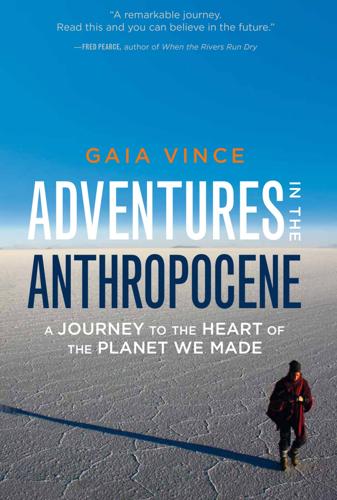
Adventures in the Anthropocene: A Journey to the Heart of the Planet We Made
by
Gaia Vince
Published 19 Oct 2014
Even more extraordinary is how our beautiful aberration evolved its complexity, because when Earth formed 4.6 billion years ago, it was a churning mixture of only around seventy different minerals. As the planet cooled, the heavier of these – elements like iron – were drawn by gravity into the core. Around 3.9 billion years ago, our spinning planet entered a violent era known as the Late Heavy Bombardment, during which time a barrage of asteroids smashed into Earth, pummelling gigantic craters in the surface. These asteroidal invasions brought valuable cargo – a treasure trove of precious metals, including gold, platinum and tungsten, which were embedded in the planet’s mantle. Earth’s continual volcanic upheavals and the abrasive wear of the oceans more than doubled the mineral count, as different elements were brought together and reacted under a range of pressures and temperatures.
…
Foundation 342 Goodall, Chris 322 Google 28, 44 Google Earth/Maps 51, 366, 367 Goreau, Thomas 167 gorillas 237, 248, 276 granite 299 graphene 317 grasses/grasslands 7, 106, 109, 129, 221, 222, 231, 238, 240, 271, 287 Great Acceleration 3, 8, 307, 320 Great Barrier Reef, Australia 169 Green Revolution 109, 114, 133, 317 greenhouse gases 8, 23, 34, 35, 51, 67, 68, 144, 146 and biofuel production 145 see also carbon dioxide; methane greenhouses 65 desalinated seawater 219–20 Greenland 73, 177, 178, 182, 215 Greenpeace 183 Gregory, John and Sue 153 Grindr app 367 groundwater 47 contamination of 310 extraction of 50, 72, 115, 203, 215, 379 Groupon (online shopping network) 367 guanacos 74 guano 108 Gujarat, India 110–14, 115–16, 212 Guyana Shield 267 Haber, Fritz 108 Hadley Cell 15–16 Hadley Centre for Climate Research 66 Hadzabe people 223–7, 320 Haiti 28, 366 Haiyan, typhoon 66 Hansen, James 177 Hartmann, Peter 80–82, 85, 86 Haywood, Jim 66 HCFCs 374 helium 298, 329 H5N1 influenza 349 HidroAysén (company) 79–80, 86–7 high-voltage direct current (HVDC) lines 213–14 Hilbertz, Wolf 167 Himalayas 19, 40, 46, 47, 51–3 Hippocrates 304 hippopotamuses 207, 229 Hiroshima, bombing of 327 HIV/Aids 135, 198, 234, 245, 283, 349 Ho Chi Minh City, Vietnam 89, 380 Ho Tong Yen 360–61, 362 Hoatzin/‘stink bird’ 271–2 Hobbs, Richard 253–4 Hofmeister, Anke 172 Holocene epoch 4, 7, 8, 9, 17, 238, 264, 299, 338 honey badgers 199–200, 226 honey birds 199–200, 226 Hong Kong 90, 346, 340, 369–70 Hooker, Joseph 285–6 Hoover Dam, USA 77 Huaneng Group: carbon capture facility 330 huemal deer 82, 83 Hulhumalé, the Maldives 162 Hunt Oil 280 hunter gatherers 7, 11, 94, 107, 124, 223–7, 233, 238, 279, 338, 345 Hurricane Katrina (2005) 380 Hurricane Sandy (2012) 379 Huvadhoo atoll, the Maldives 164 hydrocarbon fuels 214, 296 hydrodams see dams hydroelectricity/hydropower 31–2, 39–42, 52, 77–8, 213–14, 327 see also dams hydrogen 16, 214, 298, 329, 365 ‘hydropeaking’ 85 hydropower see dams; hydroelectricity Hydropower Sustainability Assessment Protocol 98 ibex 50, 260 ice ages 7, 17, 34, 264 ice melt 177–81 see also glaciers Iceland 184, 213 ICRISAT see International Crops Research Institute for the Semi-Arid Tropics IGCC see integrated gasification combined cycle power plants IMF 135 Imja glacial lake, Nepal 52 Incas, the 62, 270, 333, 334 Independent 178 India 34, 37, 116–17, 147, 320 air-conditioning units 374 air pollution/‘brown cloud’ 37, 38 aquifers 111, 112, 114 biofuel production 145, 332 coal-fired stations 325 GM crops 140, 141 groundwater extraction 115, 117 irrigation 114, 115, 211 land bought in Africa 102–3 mobile phones 28 Slum-Dwellers International network 350 tanka system 115–16, 117 tigers 244, 247 water shortages 110, 114–15 see also Ladakh India Space Research Centre 112 indium 315–16 indium tin oxide (ITO) 316 Indonesia 2, 35, 129, 256 ‘Indus Oasis’ (casino) 113 Indus River 53, 71–2 Industrial Revolution 3, 35, 263, 300, 307, 310 industrial symbiosis manufacture see ‘closed-loop’ manufacture insects 1, 17, 71, 108, 141, 142, 263, 271, 291 as food 97, 148, 388--9 and pest-control 134 see also ants; bees integrated gasification combined cycle (IGCC) power plants 330, 331, 332 Interface (carpet manufacturer) 319 International Crops Research Institute for the Semi-Arid Tropics (ICRISAT) 139–40 International Energy Agency (IEA) 213, 318, 325 International Institute for Environment and Development 98 International Thermonuclear Experimental Reactor (ITER) 328–9 Internet, the 11, 18, 24, 26, 27, 29–34, 136, 322, 367–9 Inuit, the 182 invasive species 250, 252–6 iron 298, 299, 306, 307 Irrawaddy River 53 irrigation 72, 79, 109, 114, 115, 118, 121, 132, 133, 143 with desalinated seawater 219–20 in deserts 107 drip 112, 113, 114, 120 in India 49, 50, 51, 52, 54, 56, 57, 58, 59, 61, 211 in Libya 215 solar-powered 211 Isiolo, Kenya 193, 194 Isla Incahuasi, Bolivia 334 Israel: electric cars 373 Itaipu dam, Brazil/Paraguay border 102 ITER see International Thermonuclear Experimental Reactor ITO see indium tin oxide Ito, Akinori 326 Ituri Forest, Democratic Republic of Congo 246 ivory trade 198, 246 Jadeja, Hardevsinh 110–14, 143 jaguars 240–43, 237, 247, 260, 270, 275, 278 Janjaweed, the 245 Japan 102, 147, 161, 186, 318–19, 327, 340 jatropha 145 jellyfish 185–6 JET experiment 329 jet stream, the 180–81 Jinja, Uganda 122 Jones, Steve 378 Kalinowski, Celestino 279, 280 Kalinowski, Jan 279–80 Kalundborg, Denmark 320 Kampala, Uganda 112 Kandholhudhoo, the Maldives 160, 161, 163 Karachi, Pakistan: Orangi slum 350 Kathmandu, Nepal 18, 30, 32, 36–7, 39, 42 Kenya 135 drought 193, 195–6, 200–1, 206 education 204–5 206 M-Pesa 28 missionaries/missions 193–4, 199, 202, 204–5, 206–7, 208 pastoralists 196, 201, 205–6, 210 road-building 197–8 shanty towns 350 tribal conflict 193, 194–5, 196–7, 201, 206 see also missionaries; Turkana, Lake Kenya, Mount 46, 235 Kew Gardens, London 286 kha-nyou (rodent) 94 Khone Phaphene Falls, Laos 97 Khulna, Bangladesh 343, 346, 347, 352 Kikwete, Jakaya Mrisho, President of Tanzania 230, 259 Kilimanjaro, Mount 46 Kilimo Trust 120 Kinabalu, Mount 46 kingfishers 268, 271 Kipling, Rudyard 18 Kiribati 174–7 Kissinger, Henry 109 koala bears 237, 250 Kolkata, India: 2 Nehru Colony 366–7 Konik ponies 236 Korea, South 90, 102, 124, 346, 365 POSCO iron and steel consortium 336 krill 180 Kubuqi Desert, China 192 Kyakamese village, Uganda 118–20 Laama, Ringin 40 labour, division of 339 Lackner, Klaus 294, 295–6 Ladakh, India 48–51 artificial glaciers 53, 56–61 Laetoli, Tanzania 223–4 landslides 40, 46, 52 languages 26, 55, 62, 224, 273, 277, 347, 378 Lanzhou, China 362 Laos 88, 97, 98, 99 cluster bombs 90 Communist government 90, 91, 94 opium use 89 road-building 91–2 slash-and-burn 89 see also Mekong River La Paz, Bolivia 274, 275, 310 Las Vegas, Nevada 103, 193 ‘Late Heavy Bombardment’ 298 Laurance, Bill 255 lead/lead mining 301, 310, 315, 316 Leakey, Mary 223–4, 232 legumes 38, 133, 134 Leh, Ladakh, India 50–51, 54–5 leishmaniasis 274 lemurs, Madagascan 247, 250, 256 Lenfest Center for Sustainable Energy, Columbia University 294 León, German Cardinas 348 Leonard, Annie: The Story of Stuff 319 leopards 94, 227, 229 snow leopards 33, 260 leprosy 343 Li Quan 247 Libya: Great Man-made River project 215 Licancabur volcano, Bolivia 333 Licapa, Peru 62–4 ‘light-bulb conspiracy’ 312 lighting/light bulbs 315, 371 Lima, Peru 216–17 asentamientos humanos (AAHH; slums) 62, 217, 218, 347–8, 352 fog-harvesting 217–19 lions 227, 228, 229, 239–40, 248 Liquiñe–Ofqui fault line 85 lithium 332, 335–6 Liverpool 349 livestock 147, 148, 196, 200–1, 206 see also cattle; sheep; yaks llamas 74, 221, 300, 334 logging industry 9, 267, 268, 270, 273, 274, 276, 277, 283, 288, 289--90 Loiyangalani, Kenya 199, 204–5, 206–8 London 317, 349, 350, 364, 372, 378 ‘Gherkin’ 374 ‘guerrilla gardeners’ 377 smog 3, 35 Thames Barrier 379 Lopes, Antonio Francisco Bonfim (‘Nem’) 356 Lord’s Resistance Army (LRA) 126, 245 Loshner, Gabriella 83 Lovelock, James 294 Lowoi (schoolteacher) 201, 202 Luang Prabang, Laos 89 Lugo, Ariel 254 Luis Val, Adalberto 291, 292 Lummerich, Anne 218 Luna, Javier Torres 217–18 Lyme disease 242 lysine 138 Ma’aden aluminium mine, Saudi Arabia 104 Maasai, the 224, 229–31 macaws 268, 271, 278, 281 McDougall, Gerald 188–9 McKinsey (consultants) 103, 319 Macquarie Island: rabbits 255 Madagascan lemurs 247, 250, 256 Madagascar 93, 124, 237, 264 Madidi National Park, Amazon Basin 267, 269–72, 273–4, 277–8 Madre de Dios region, Peru 278–84 Madre de Dios River, Peru 280–81, 283 Madrid: Canada Real Galiana 344 mahogany trees 270, 275, 279, 289 maize 125, 129, 130, 138, 144, 250 Makerere University, Kampala 137, 138 malaria 43, 121, 135, 199, 224, 274, 283, 293, 341, 367 Malawi 135 Malaysia 28 Petronas Towers 370 see also Singapore Maldives, the 152–3, 156--9, 175, 186 artificial islands/floating islands 157, 162–3 coral reefs 158, 159, 160, 161–2, 164, 166–8 ‘designer islands’ 160–61 heroin dependency 156 overfishing 169–70, 171–2 Soneva Fushi 172–3 tourists 153–4, 156, 158, 160, 163, 171, 172, 173 Malé, the Maldives 153, 154, 156, 161 Mamang-Kanga, Jean-Baptiste 245 Manaus, Brazil 290–91 manta rays 170, 185, 245 Manu National Park, Madre de Dios, Peru 278–80 Manu River 280–81 Manu Wildlife Centre 279, 281 marijuana 357, 369 marine reserves 186–7 Mascho-Piro tribe 279 Masdar, Abu Dhabi 366 Matterhorn, the 48 Mawlamyaing, Burma 91 meat consumption 147, 148, 290, 322 Medellín, Colombia 353–4, 357 Mekong River 53, 88–9, 90–91, 95, 99–101, 105 fish/fishing 95–6, 100, 101 hydrodams 83, 88, 89, 91, 92–4, 95–6 meltwater see glaciers Mesozoic era 221 metals 298, 299–300 rare earth 305, 315, 373 see also copper; gold; gold mining; iron; silver; silver mining methane 41, 78, 129, 134, 178, 214 methanol 296 metro/underground systems 346, 353, 354, 357, 364, 372, 373 Mexico City 379 miconia shrub 252 ‘microloan’ cooperatives 130 millets 130, 139, 143 minerals 191, 272, 298–9, 300, 305 mining 8, 9, 300, 308–9 see also coal; copper mining; gold mining; silver mining miscarriages 203 missionaries/missions see Kenya mobile phones/smartphones 27–9, 34, 118, 136, 210, 212, 231, 300, 304, 311, 312, 315–16, 335, 367 see also M-Pesa Mohammed, Fatima 161 Mojave Desert, California 209, 213, 214 monkeys 275, 291 chimpanzees 3–4, 306 howler monkeys 271, 281 spider monkeys 267, 271, 275–6, 277, 278, 281 Monsanto (company) 140–41 Montana, USA 236 Morales, Evo, President of Bolivia 274, 277, 278, 282, 335, 336 Morgan, Ned 121 mosquitoes 47, 274, 293, 341 moths, urban 377 mountains 8, 45–8, 66–7 painting white 62–4 M-Pesa mobile phone banking service 28, 208, 211, 350 mulch/mulching 133, 134, 145 Mumbai, India 344, 374 Murray River 72 Museveni, Yuweri, President of Uganda 126 mussels 187 Mutharika, Bingu wa, President of Malawi 135 Mwanawasa, Levy, President of Zambia 175 Nagasaki, bombing of 327 Nairobi 200, 207, 209, 210, 344 Nakai, Laos 92–4 Nam Theun II dam, Laos 92–4 Namibia 215, 216, 362 Nangi, Nepal 21, 24, 25–7, 30–32, 33, 36, 43 Napoleon Bonaparte 285 NASA 177, 294, 333 NaSARRI see under Uganda Nasheed, Laila 154 Nasheed, Mohamed (‘Anni’), President of the Maldives 153–8, 160, 161, 163, 172, 173–5, 190 National Geographic 273 Neanderthals 2, 238, 259, 306 Neem trees 134 Nepal 18–20, 21–3, 24–7, 43 Bengal tigers 243–5 electricity 20, 27, 41–2, see also hydropower (below) glacier melt 37, 40–41 hydropower 31–2, 39–40, 41 Internet/Wi-Fi 24, 27, 30–31, 32, 33, 34 tourism 32–3, 39 yak herders 24, 33, 37, 40 see also Kathmandu; Nangi Netherlands, the 236–7, 379 New Guinea: rainforest 264 New Orleans: and Hurricane Katrina 380 New Songdo City, South Korea 365 New York City 35, 317, 349, 350, 365, 378, 379 Bank of America Tower 371 raised railway park 377 water sources 104 New York Times 77 New Zealand 47, 175, 184, 237, 308 Ngorongoro Crater, Tanzania 224, 228–30 Niger Delta 309 Nigeria 114 Nile, River 71–2, 79, 103, 122, 204, 207 Nineveh 339, 340 nitrogen 8–9, 16, 108, 133, 146, 373 nitrogen-’fixing’ plants 133, 136, 142, 143–4 Nomura’s jellyfish 186 Norphel, Chewang 53–9, 60–61, 69 North-East Passage 181 North Pole, the 177, 182 Norway: hydroelectricity 213–14 Nottingham, University of: Frozen Ark project 259 Nubian Sandstone Aquifer 215 nuclear energy/power stations 327–8 nuclear fusion plants 328–30 nylon stockings/tights 312 obsolescence, planned 312–14 oceans 150–52 acidification 3, 9, 152, 153, 165, 168–9 conservation zones/reserves 186–7 phytoplankton 152, 180, 190 pollution 152, 187–9 see also Arctic Ocean; sea-levels, rising ocelots 240 Odentethes hatcheri (fish) 83 Ohtake, Ruy 358 oil/oil industry 23–4, 181–2, 183, 280, 284, 296, 308, 309, 318, 326 oil spills 182 Okehampton, Devon 349 Okello, David Kalule 135–9 Olmaikorit-Oumo, Florence 130 Ologara village, Uganda 125–6, 127–31 Oman: peridotite 296 Omo Valley, Ethiopia 203, 204 Omoding, Ephrem 125, 127 Omoding, Winifred 125–7, 129–33, 143 One-Laptop-One-Child organisation 31 Oostvaardersplassen, the Netherlands 236–7 opium industry 89–90 orang-utans 248, 273, 276–7 Ordos, Inner Mongolia 331, 359 organic farming 133–4 orius (pirate bugs) 219 oryx, Arabian 256 oscar (fish) 291–2 ostriches 197 otters 83, 270 oxygen 16, 142, 214, 285, 293–4 lack of 133, 185, 186, 187, 291–2 and photosynthesis 263, 264, 284, 299 oysters 168 ozone 35, 37, 38, 373 ozone layer 3, 11, 17, 66 painting mountains/roofs white 62–4, 374 palm oil 276, 290 palm trees 172, 204, 266, 270, 293, 343 Panama Canal 320–21 pandas, Chinese 257 Pangaea 45 pangolins 245 Pantanal, the 240–42 Paraguay 102, 240 Parana River 102 Parco, Salamon 62–4 Paris 347, 364, 373 Parker, Ted 280 parks, national 236 see Bardia, Madidi, Manu, Serengeti and Yellowstone National Park Pascua River dam, Patagonia 73, 75–6 passenger pigeons 259 pastoralists 205–6, 210, 214, 220, 225 see also Maasai, the Patagonia 74–5, 81, 86 hydroelectric dams 73–4, 75–7, 79–88 Peak District, England 310 peanuts 118–19, 120, 129, 132–3, 136, 143 genetically modified 138, 139–40 peas 51, 139 peat 263, 310 Pemuteran, Bali 167 peridotite 296 Peru 41, 52, 108, 278–84, 332 mountain painting 62–4 pest-control/pesticides 129, 132, 134, 136, 141, 143, 185, 219, 243, 293 petrels 186 petroleum 309, 325–6 Petronas Towers, Malaysia 370 Phakding, Himalayas 39 pharmaceuticals 272 Philippines 28, 65, 66 Phnom Penh, Cambodia 100 Phoenix, Arizona 103, 193 photography 304 photosynthesis 2, 16, 38, 143–4, 165, 180, 190, 214, 263, 264, 265, 284–5, 291, 293–4, 297, 299, 317 photovoltaic (PV) panels see solar energy Phuktse, Ladakh, India: artificial glacier 58–9 phytoplankton 152, 180, 190 piezoelectric generators 363 Pilon Lajas Biosphere Reserve, Bolivia 278 Pinatubo, Mount (Philippines): eruption of (1991) 65 pine beetles 236 Piñera, Sebastian, President of Chile 80, 87 PlanIT Valley, Portugal 365 plankton 84, 168, 185, 309, 386 see also phytoplankton plants 1–2, 47, 70–71, 262, 263, 288, 326 plastic 5, 187–8, 311 bags 4, 128, 189, 323, 341 3D-printed items 317 turning back into oil 326 plate tectonics see tectonic movements platinum 214, 298 Playas de Rosarito, Mexico: proposed desalination plants 102 Pleistocene epoch 236, 237, 238 plutonium 328 Pokhara, Nepal 18, 19–20, 30 polar bears 178, 187 polio vaccination 367 pollution 310, 312, 318, 321, 330, 360–61 and environmental services fees 322–3 radioactive 7, 11 see also air pollution; ocean; waste; polyester garments 187 population growth 3, 9, 11, 36, 146–7, 251 POSCO iron and steel consortium 336 potatoes, sweet 140, 143 Potosí, Bolivia: silver mines 300–6, 307, 310 prickly pear 251, 256 printers, electronic 313 3-D 317 public transport 345, 372–3, see also metro Puerto Maldonado, Peru 283–4, 288 Puerto Rico, Gran Canaria: International Institute of Tropical Forestry 254 pumas 73 pumps, groundwater 50, 51, 115, 121, 122 see also boreholes; wells Pun, Mahabir 18–19, 21–7, 30–33, 37 Pun tribe 24, 27, 41 Putin, Vladimir, President of Russia 181–2 PV panels see solar energy pyrolysis 326 Qatar 219 Quechua 62, 347 Racoviteanu, Adina 60–61 radio 17–18 Rahmsdorf, Stefan 177 rain/rainfall 15, 37–8, 46, 47, 150, 151 acid rain 3, 310 in Africa 118, 122, 195 artificial production of 66, 132 harvesting and storing 115–17, 121–2, 216 in India 49–50, 111 in Lima, Peru 216, 217 in Uganda 118, 119, 122, 128 rainforests 15–16, 262, 264–5, 272–3 Borneo 264, 276–7 see also Amazon rainforests Raj-Samadhiyala, Gujarat, India 110–14 Rajkot, Gujarat, India 110, 115 Rajoelina, Andry, President of Madagascar 124 rats 250, 255 Ravalomanana, Marc, President of Madagascar 124 recycling see waste; water REDD+ (Reducing Emissions from Deforestation and Forest Degradation) 287–8, 289 redwoods, Californian 218, 293 Rees, Richard 171 refrigerants 17 Reid, Brian 84 reservoir-building 53, 77–8, 104, 112 Restore and Revive 259 rhinoceroses 227, 228, 246, 248, 258 rhododendrons 250 Ribeiro da Silva, José Claudio 268 rice/rice-growing 78, 90, 97, 101, 109, 134, 136, 143–4, 147, 185, 250 genetically modified 140, 141 Rift Valley 203, 223, 232 Rimac River 216 Rio de Janeiro, Brazil: favelas 354–8, 367 Rio Grande 72 rivers 4, 8, 50, 53, 70–73, 104, 308 see also dams and specific rivers road-building Amazon rainforest 281–4 Burma–Vietnam 91–2 Serengeti 258–9 Robichaud, Bill 92, 94 Robinah, Byarindaba 118–20, 121 Rockefeller Foundation 138, 139 ‘rock glaciers’ 60 rocks 2, 46, 74, 108, 299–300 Rome/Romans 34, 307 roofs, whitewashing 64, 374 Roosevelt, Theodore, US President 227 Rotterdam, Netherlands 379 Rubbish Island, 163 Ruiz, Rosa Maria 266–72, 273–4, 275, 277, 278 ruminants 221–2, see cattle Rurrenabaque, Bolivia 265–6, 269 Rwanda: gorillas 276 Sahara Desert 195 aquifers 215 Desertec solar power plant 213 Great Green Wall 192 minerals from 191, 272 salamander, jumping 257 Sale, Peter 164, 167 salmon, farmed 185 salt production 334 Salter, Stephen 66 Samburu tribe 195, 197, 201, 204, 208 Samso island, Denmark 325 San Cristobel, Bolivia: silver/zinc mine 333 San Diego, California: Zoo 259 San people 232–5 Sánchez de Lozada, Gonzalo 273 sand dams 198, 216 sanitation 11, 20–21, 38, 115, 339 see also toilets Santa Cruz, island of, Galapagos 251–3 Charles Darwin Research Station 251–2, 253, 254 Santiago, Chile 75 São Paulo, Brazil: Heliopolis favela 358 saola antelope 94 Sarima, Kenya 201–3 SARS 349 satellites 18, 22–3 mapping by 60–61, 112, 367 Saudi Arabia 102, 104, 308 solar-powered desalination plants 216 superfarms 148 savannahs 221–3, 238, 265 Save the Children 135 scalesia (Scalesia pedunculata) 251, 252, 253 schizophrenia 377 schools see education seabirds 186 sea cucumbers 168–9 seagulls 377 sea-levels, rising 5, 9, 52, 151, 153, 159–60, 174–8, 189–90, 343, 379 Seasteading Institute 189 Semiletov, Igor 178 Seoul, South Korea 346 Serengeti National Park 223, 227–32, 256, 258 Serere bird 271–2 Serere Sanctuary, Amazon Basin 268 service manuals 313–14 sesame seeds 125, 131, 138 Shabab, the 245 Shanghai 35, 89, 211, 321, 322, 379 shanty towns see slums sharks 164, 171–2, 185, 242 whale 170–71 shearwaters 186 sheep 74, 81, 82, 221, 236 Shemenauer, Bob 219 ships 65, 317, 320–21 Shivdasani, Sonu 172–3 Shrestha, Alok 41 Siem Reap, Cambodia 99 silica 84 silicosis 301, 302, 303, 306 silver 304–5, 312 silver mining, Bolivian 300–6, 333 silver nitrate 304 Silvestre, Elizabeth 216–17 Simpson Valley, Chile 83 Singapore 90, 346, 360, 362, 369 Marina Bay Sands 376 Si Phan Don, Laos 95 Siteram (Nepali guide) 243–4 Skarra, Ladakh, India 53 Skinner, Jamie 98 skyscrapers 370–71 slash-and-burn 107, 128, 277 sleeping sickness 225 sloths 237, 250, 270 slums/shanty towns 341–4, 346, 347, 348–53, 366–7, 378 in Brazil (favelas) 354–8, 367 smartphones see mobile phones Smil, Vaclav 250–51 Smithsonian Institute, Washington DC 227 Smits, Willie 276–7 social media sites see Facebook; Twitter soil(s) 108, 127–9, 142 solar energy/power 30, 211–14 combined with wind projects 209, 213, 361 for desalination plants 193, 216, 219–20 for public and private buildings 363–4, 366 panels/photovoltaic (PV) panels 116, 211–12, 214, 315, 331, 332 and payback schemes 211, 212, 323 storage and distribution 213–14, 365 solar radiation management 63–5, 68–9, 132 Soneva Fushi, the Maldives 172–3 sorghum 120, 125, 130, 139, 143, 144 Soroti, Uganda 125–6, 132, 135 Soules, Luke 313, 314 South Africa 118, 236, 351–2 Southern Ice Field 73 soya/soybean 281, 289, 290 Spain 65, 128, 184, 213, 216, 301, 307 spotted fever 242 Stakmo, Ladakh, India 48–50, 61 Stanbic Bank Uganda 120 star coral 257 Starbucks 368 steam power 213, 219, 307, 365 Stone Age 2–3, 307 stoves see cooking stromatolites 16 sturgeon 71 sugar cane 122, 144, 145, 290 Sumatra: rainforest 264 Sumerian cities 339 Sundrop Farms, South Australia 219 sunflowers 125, 131, 138, 145 sunlight see solar energy; solar radiation management Survival International 234 sustainability 323–5, 369, 371, 375–6 Suzano (Brazilian consortium) 290 Svalbard islands, the Arctic 37 Switzerland 20, 21, 48, 60 Syncrude mine, Athabasca oil sands, Canada 4 syngas 296, 330 Syngenta 140–41 Tacana people 269, 277 Taiwan 90, 146–7 tamarin, pied 291 tanka system 115–16 Tanzania 223–4 road-building 258–9 tourism 227, 231 UAE hunting reserves 227, 230 see also Serengeti National Park tapirs 237, 240, 270, 275, 281 tar sands 309 tara trees 218 Target (supermarket) 369 tarpans 236 Tashi (Indian farmer) 48, 49, 61 Tasmanian devils 247 Tasmanian tigers 260 taxes 97, 123, 194, 324, 350, 356, 357, 368, 372 tectonic movements 45–6, 73, 85, 250, 263, 299, 334 telegraphy 27 television sets 313, 314, 315 tenebrionid desert beetle 218 Thailand 90, 91, 93, 100, 256 Thakek, Laos 91, 95 Thar Desert, Rajasthan, India 209 Thiel, Peter 189 Thiladhunmathi atoll, the Maldives 164 Thilafushi, the Maldives 163 Thompson, Lonny 64 thorium/thorium reactors 315, 328 3D printing 317 Three Gorges Dam, China 83 Thupstan (Indian farmer) 50 Tianjin, China Eco-city 360–63, 375 GreenGen energy plant 330 Tiedemann, Kai 218 tigers 94, 243–5, 246–8, 249, 260 tiger wine 245, 246 Tigris, River 71–2 tilapia 207, 208 tin/tin mining 299, 301, 310, 316 tin oxides, non-stochiometric 316 Toba, Indonesia: volcanic eruption 2 toilets 20–21, 25, 26, 113, 115, 116, 348, 363 tokamaks 329 tokay geckos 256 Tokyo: population 340 Tomasetti, Roberto 166–7 Tong, Anote, President of Kiribati 174–6, 190 Tonle Sap, Lake 99–100 Torres, Geronimo 63–4 tortoises 214, 250, 251, 252, 253, 255 Toshiba 314 tourism industry/tourists Amazon rainforest 270, 273, 276, 279 Cambodia 99 and ‘conservation fees’ 248 India 50–51, 57, 244 Maldives 153–4, 156, 158, 160, 163, 171, 172, 173 Nepal 32–3, 39 Serengeti 228, 231 in Tanzania 227, 231 TRAFFIC 245, 246 trains, maglev 372 trees 129, 263 artificial 295–6, 297 fog-trapping 218 see also deforestation; forests tryptophan 138 tsetse flies 225 Tsodilo Hills, Botswana 233 tsunamis 160, 161, 328 tuberculosis 135, 234 Tullow Oil 210 tuna 169–70, 185, 187 tundra, Arctic 178, 293 tungsten 298 tunqui (bird) 279 Turkana, Lake (Kenya) 193, 199, 203–4, 205, 208, 209 and see below ‘Turkana Boy’ 203 Turkana Corridor Low Level Jet Stream 208–9 Turkana solar power station 210–11 Turkana tribe 194–5, 197, 201–2, 204, 207–8, 242, 316 Turkana wind farm 208–9, 210 Turkmenistan 59 turtles 170, 174, 185, 187, 268, 280 Tuvalu 174 Twitter 28–9, 367, 368 Uganda 26, 118–22 agriculture 118–22, 125, 126–33, 135, 136, 137–8, 140, 144 gorillas 276 National Semi-Arid Resources Research Institute (NaSARRI) 130–31, 136, 138 roads 144 United Arab Emirates: Tanzanian hunting reserves 227, 230 United Nations Convention on Biological Diversity 247 Environment programme 37, 248 Food and Agriculture programme 145 GRIDMAP programme 203 United States of America 157 Agency for International Development 133 biofuel production 145 dams 77, 98 maglev trains 372 meat consumption 147, 148 National Ignition Facility, California 329 Natural Resources Defense Council 374 no-till agriculture 142 oil consumption 318 water use 102, 362 see also specific states and towns Ur 339 uranium 308, 315, 327, 328 Uribe, Freddie 342 Uunartoq Qeqertaq 178 Uyuni, Bolivia 332–3, 336–7 salar (salt flats) 333–6, 337 Vabbinfaru, the Maldives 166–7 Vanua Levu, Fiji 176 VCRs 313–14 vegetables 26, 61, 65, 97, 272 see also legumes Venice 168 vetifer 129 Victoria, Queen 27 Vientiane, Laos 91 Vietnam 90, 92, 100–1 floating markets 101 Villa Hermosa, Colombia 341, 342–3, 344, 346, 347, 352 villages 338–9, 378 Vio, Francisco 82 Vishwanath (‘Zen Rainman’) 116–17 vitamin A deficiency 140 VoIP phones 31 volcanoes/volcanic eruptions 2, 5, 36, 65, 66, 68, 73, 79, 85, 299, 333 Vong, Mr (restaurateur) 96–7 Wageningen, Carlo van 210 Walker, Barry 279, 280–81 warthogs 229 waste 310–11, 312–13, 361 electronic 311–12, 313 food 144, 147 plastic 5, 187–8, 326 recycling 319–20, 322, 323, 324, 351 waste-pickers 350, 351–2 water 11, 46–7, 72–3, 215 fetching 202–3 recycling 115, 323, 362–3 ‘virtual water’ trade 102–3 see also aquifers; boreholes; dams; desalination; fossil water; glaciers; groundwater; irrigation; rain; reservoirs; rivers; wells water shortages 72–3, 103–4, 215–16 Africa 118, 121, 122–3, 215 India 49–51, 57, 110, 111–13, 114–15 see also droughts wattieza (plants) 263 wells, hand-dug 121, 122, 132 Westpoint Island, Belize 188–9 wetlands 53, 71, 78, 85 artificial 104–5 whale sharks 170–71 whales 73, 164, 180 wheat 7, 23, 38, 43, 51, 88, 109, 136, 138, 193, 250, 251 Wiens, Kyle 313, 314–15 Wi-Fi 24, 30–31, 32, 356 Wikipedia 12 wildebeest 228, 229, 231, 258 wildlife see animals and specific animals Wilson, E.
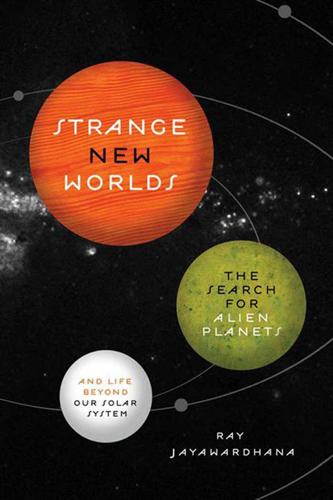
Strange New Worlds: The Search for Alien Planets and Life Beyond Our Solar System
by
Ray Jayawardhana
Published 3 Feb 2011
The cratering record on the Moon shows a sharp peak at 3.9 billion years ago, as if the inner solar system were pelted by a furry of large meteorites for a brief period long after the planets formed. Life on Earth, if it had developed by then, would have been disrupted or even reset. The cause of this “late heavy bombardment” remains a mystery. Some have suggested that the growth and outward migration of Neptune may have catapulted millions of leftover planetesimals to the inner solar system. Others blame the possible inward migration of Jupiter, which may have stirred up the asteroid belt, especially if Jupiter and Saturn entered into resonant orbits (such that Jupiter would circle the Sun twice as Saturn goes around once).
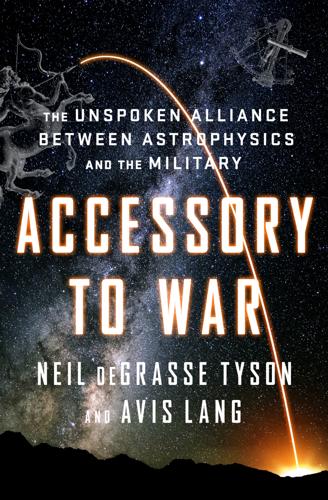
Accessory to War: The Unspoken Alliance Between Astrophysics and the Military
by
Neil Degrasse Tyson
and
Avis Lang
Published 10 Sep 2018
A big blob gets bigger faster than a small blob. Meanwhile, a lot of energy is getting deposited on what we would now call a protoplanet, as the kinetic energy from other colliding specks and blobs accumulates. For a couple hundred million years during the late childhood of our solar system, a period sensibly called the Late Heavy Bombardment, those collisions were significant and continual. With kinetic energy converting entirely to heat on impact, the deposited energy renders the protoplanet molten. And when you’re molten, dense ingredients (such as pure heavy metals) fall toward your middle, and less dense ingredients (such as silicates) rise to your surface.
…
H., 427–28n Kubrick, Stanley, 494n Kuiper Belt, 344 Kutzscher, Edgar, 476n Lacrosse satellite, 343 LaFeber, Walter, 303 Landsat, 343–44 Langley, Samuel P., 128, 148, 457n Laplace, Pierre-Simon, 456n Large Hadron Collider, Switzerland, 28 Lascaux, France, cave drawings, 420–21n laser-guided bombs, 332, 335, 342 laser guide stars, 154, 155 lasers acronym, 242 in airborne antimissile defense, 156, 253 Curiosity rover’s ChemCam laser, 242, 389–90 as directed-energy weapons, 241–42, 247 fiber laser, 246 geodetic meridian and, 99 invention, 288 spaced-based lasers, challenges of, 245–47, 480–81n Lasser, David, 192 Last Empire, The (Vidal), 35 Late Heavy Bombardment, 384 latitude, 72, 73–74, 83 Lay, James S., Jr., 304–5 leap second, 46 leap year, 422–23n Lebombo bone, 420n Lee, Robert E., 124, 126, 449n Lee, Wen Ho, 375 Lehman Brothers, 5 LeMay, Curtis, 248, 304, 481n, 506n lenses achromatic lens, 130, 132 apochromatic lens, 132 color problem in lens optics, 129–30 combinations used in telescopes, 109, 110, 444n concave lenses, 110, 129, 442n convex lenses, 110, 129 double concave lenses, 129 double convex lenses, 129 plano-concave lenses, 129 plano-convex lenses, 129 problems in large refracting telescopes, 133 spectacle lenses, 102, 442n see also telescopes Leutze, Emanuel, 114–15 Lewis, Jerry, 412n Lewis, Outer Hebrides, Scotland, 72 Lewis, Sinclair, 274, 315 LHS 1140B exoplanet, detection, 399 liangtianchi, 75 Libya, 328, 331 Liebenfels, Lanz von, 421n Liebig, Justus von, 133 LIGO (Laser Interferometer Gravitational-Wave Observatory), 198, 399, 461n Limited Nuclear Test Ban Treaty (1963), 215, 273, 285, 287, 293, 313, 498n Lincoln, Abraham, 269 Lipperhey, Hans, 102, 103, 104, 106, 107, 109 “Little Boy” (Hiroshima), 303, 307, 505n Little Round Top, 126–27 Lockheed Martin campaign contributions, 412n in Colorado Springs, 16 F-117A stealth fighter, 197, 198, 332, 470n, 514n HEXAGON (KH-9) satellites, 205 prosperity after September 11, 2001, 11, 12 Russian rocket joint ventures, 363, 371 Skunk Works unit, 198, 276, 469n weapons manufactured by, 18 Lo Compasso da Navigare, 77 lodestones, 75, 436n long-distance telephone calls, 177–78, 462n longitude differences of latitude and longitude, 73 difficulty in determining, 73, 93, 440n Hipparchus development of, 72, 73 methods of determining, 94–97 need for a system of latitude, 93–94 places used for zero degrees, 87, 89, 94 prime meridian and, 87, 89, 98–99 prizes for solving the longitude problem, 95–96 see also meridians Lord, Lance W., 18, 19 Los Alamos National Laboratory, 216, 217, 390–91 Louis XVI, 121 Lovell, Bernard, 191, 209, 210–12, 268, 468n, 489n low Earth orbit (LEO), 398 Luna (Lunik) probes, 211, 271–72, 473n “lunar cycle effect” in stock market, 56 lunar cycles and lunar months, 39, 420–21n Luther, Martin, 51 Lutwak, Robert, 339 Lydians and Medes, 45, 423n Macbeth (Shakespeare), 173 Madeiras, 80 Mad Men (TV series), 161 Magellan, Ferdinand, 88, 436n magnetic compass development, 75–78 magnetite, 75 Maher, Bill, 392 Making of a Soviet Scientist, The (Sagdeev), 360 Malus, Étienne-Louis, 456n maneuverable satellites, 397, 531n Manhattan Project, 390, 401 Mansfield Amendment, 222–23 Mao Zedong, 318, 351 maps and mapmaking at end of thirteenth century, 78 Eratosthenes, 87 first extant terrestrial globe (“Erdapfel”), 87, 436n first maps of Earth’s inhabited regions, 70–71 as a form of political and social power, 91–92 Geographike Hyphegesis (Ptolemy), 50, 78, 85, 86, 87 meaning of maps, 92 Mercator’s world map, 90, 439n in sixteenth century, 89–90, 439n see also charts, maritime Marat, Jean-Paul, 121 March for Science, 378, 404 Marconi, Guglielmo, 184 Mark I radio telescope (Lovell Telescope), 180–81, 209–12, 472–73n see also Jodrell Bank Observatory Marseille Observatory, 133 Martin Marietta, 363 masers, 242, 245 Maskelyne, Nevil, 94, 96, 441n Massalia (Marseille), 70, 71, 72 Maurice of Nassau (prince), 102, 104, 107, 117 Maya, 40 McCain, John, 53 McDougall, Walter A., 261 MC 14/2 (“Massive Retaliation”), 305–6 McNamara, Robert, 285, 289, 492–93n Medes and Lydians, 45, 423n Medicare and Medicaid legislation, 288 Melvill, Thomas, 145 Mercator, Gerardus, 90, 438n meridians convergence near Poles, 84, 436–37n geodetic meridian, 99 need for, 87–88 places used for zero degrees, 87, 89, 94 prime meridian, 87, 89, 98–99 see also longitude Mesopotamia, 34, 41, 42, 49, 57, 432n meteors, detection with radar, 191 microwave ovens, 189 microwave radar, 188–89 microwaves communication using, 171, 177–78 discovery of, 171 Earth’s atmosphere and, 200–201 nonlethal weapons using, 201, 470–71n water hole, 200–201, 470n MIDAS (Missile Defense Alarm System) satellite, 278 military burden, 452n military, interservice competition, 262, 289, 500nn military satellites CCDs in, 204–7 Defense Support Program, 158, 341 during Eisenhower presidency, 278 film-return types, 204, 205, 228 ISR capabilities, 158–59 military space budget, 321, 510n see also spy satellites military spending after Vietnam War, 8, 409–10n compared to astrophysics spending, 402–3, 533nn global military spending, 403, 404, 533n military space budget, 321, 510n after September 11 attack, 12–13, 412n Strategic Defense Initiative (Star Wars), 12, 250, 411n Milky Way Andromeda galaxy collision predicted, 234 radio waves from center of, 178–79 rapid movement of central stars, 344 vs. other galaxies in universe, 131 width, 399 milspace, 349 Minoans, 68, 69 mirrors in reflecting telescopes, 133 Mir space station (USSR), 359–60, 362, 522n Missile Defense Agency, 12, 252 missile defense technology, see Strategic Defense Initiative Moltz, James Clay, 261, 280, 359 Moluccas (Spice Islands), 88 Molyneux, William, 108 Montgomery, Bernard, 305 Moon albedo, 196 first daguerreotypes of, 143, 144, 456n mountains and craters discovered, 52, 103, 110 plans to detonate a nuclear bomb on, 272, 491–92n radio waves bounced off surface, 191 Moon landings Apollo 11 mission, 353, 369 cost, 320, 510n Kennedy’s plan for, 282, 320, 458n NASA’s mandate, 289 opposition to, 289, 500n reaction to, 381–82 Moore, Francis, 426n Moran, James, 412n Morgan, J.
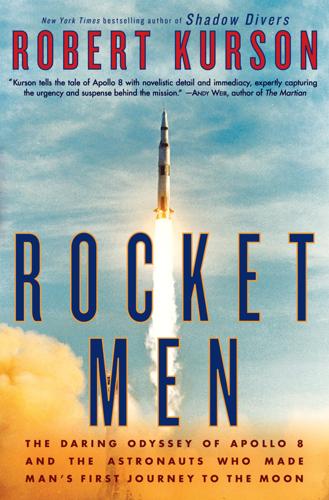
Rocket Men: The Daring Odyssey of Apollo 8 and the Astronauts Who Made Man's First Journey to the Moon
by
Robert Kurson
Published 2 Apr 2018
There are possibly more than a million craters at least a half mile wide on the Moon. Even at close range, and with optical instruments, the crew of Apollo 8 would never be able to count all the craters on the Moon. The current impact rate from meteoroids and other debris is just about one ten-thousandth of what it was during the late heavy bombardment period about four billion years ago, when the basins formed. Today, that equates to about a hundred impacts a year by objects weighing between a fraction of a pound and a ton. As a result of the constant bombardment of asteroids and comets, the vast majority of the lunar surface is coated in a mixture of powdery dust and pulverized rock fragments known as regolith.
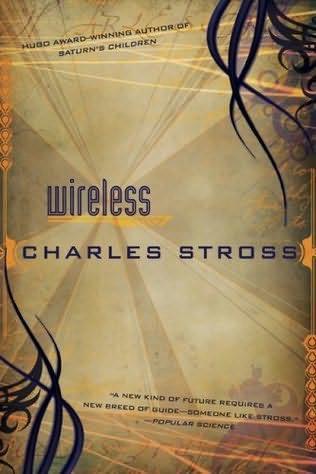
Wireless
by
Charles Stross
Published 7 Jul 2009
Meanwhile, at the balancing point between the star and the embryonic Jovian gravity well, other knots of dust are forming . . . SLIDE 4. A billion years have passed since the sun ignited, and the stellar nursery of gas and dust has been swept clean by a fleet of new-formed planets. There has been some bickering—in the late heavy bombardment triggered by the outward migration of Neptune, entire planetary surfaces were re-formed—but now the system has settled into long-term stability. The desert planet Mars is going through the first of its warm, wet interludes; Venus still has traces of water in its hot (but not yet red-hot) atmosphere.
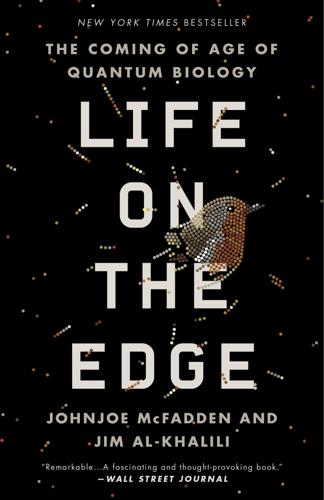
Life on the Edge: The Coming of Age of Quantum Biology
by
Johnjoe McFadden
and
Jim Al-Khalili
Published 14 Oct 2014
The Isua rocks theory remains controversial, and many scientists are not convinced that the low levels of 13C found there necessarily imply so early a presence of living organisms. Much of the skepticism derives from the fact that 3.8 billion years ago the earth was in the throes of what is known as the “Late Heavy Bombardment,” suffering regular impacts from asteroids and comets with energies sufficient to vaporize any surface water and presumably also to sterilize the oceans. Discovery of fossils of any such ancient photosynthesizing organisms would of course clinch the case, but the Isua rocks have been severely deformed over the millennia and any such fossils would be unrecognizable.

The Good, the Bad and the History
by
Jodi Taylor
Published 21 Jun 2023
‘Someone was hurt? Who’s Angus?’ ‘Bashford’s chicken.’ ‘Who’s Bashford?’ I felt safe answering this one. ‘One of the people whose car I hit.’ Should they require any evidence corroborating my story, Bashford’s car has sustained more hits than the surface of the moon during the Late Heavy Bombardment four billion years ago. The entire vehicle is peppered with impact craters. I leaned forwards and said, ‘Please tell me she’s OK.’ He looked baffled. ‘Bashford?’ ‘Angus.’ Mendis glanced at Dr Stone. For enlightenment, presumably. ‘The chicken,’ he said briefly. ‘Angus?’